#Loews Screening Room
Photo










Color TV Day
Color TV Day is celebrated on June 25 every year. Watching color television is something most of us take for granted these days, but this wasn’t always the case. The first television programs we saw were in black and white, and that was the only way we could watch them. It wasn’t until the middle of the 20th century that color television watching became the standard in the United States. It is only fair that color televisions should be celebrated on their unique day, which is Color TV Day. This event commemorates the birth of color television and the role it has played in our culture since its inception.
History of Color TV Day
The development of fully colored television systems changed the face of television forever, and the world of television as we know it would be considerably different. Even though they were far more challenging to manufacture, numerous innovators across the globe worked hard to develop such a gadget that would allow millions of people to see wireless broadcasts that were replicated in vivid color.
Such attempts began in the experimental stage during the late 19th century. The first prototype appeared in 1928, public broadcasting in 1940, and black and white transmissions’ extinction began in the mid-70s. Following the tremendous success of black and white television broadcasting in the United States, CBS researchers, under the direction of Peter Goldmark, approved a heavy and massive mechanical television system in 1950, with the first color transmission taking place in June of the following year. Because of the expensive cost of color television sets and the limited quantity of color television material available, black and white television sets remained popular until the mid-1960s, even though many American television stations began broadcasting in color as early as 1954.
Color television quickly gained popularity in the United States and eventually expanded around the globe. While Europe awaited the solidification of American standards and a solution to their early technological challenges, they introduced the color PAL format in 1967, which was eventually adopted worldwide. It wasn’t until 1972 that sales of color television sets in the United States overtook black and white television sets for the first time.
Color TV Day timeline
1876 George Carey Has a Vision for Television
Carey, a Boston civil servant, envisions television systems, submitting plans for a selenium camera that will allow people to “see by electricity.”
1897 Karl Ferdinand Braun
Braun, a German scientist, is credited with creating the cathode ray oscilloscope, which serves as a predecessor of the television image tube.
1907 Experimental Television System
Rosing develops a practical television system that employs C.R.T. and mechanical scanning technology.
1953 Experiments With Color Television
The RCA Corporation makes television history by putting their revolutionary color system on the air during an edition of NBC's “Colgate Comedy Hour.”
Color TV Day FAQs
Can I still buy a black-and-white T.V.?
It is no longer possible to buy a new black-and-white set, though many are still offered for sale on sites such as Gumtree and eBay.
Do I require a television license?
To view or record programs as they are broadcast on television and on any channel, you must have a T.V. license, according to the legislation.
What was the first color and sound movie?
Without a doubt, most movie fans are aware that Al Jolson’s “The Jazz Singer” was the first ‘talkie.’ The first color film, on the other hand, is a little more obscure. “The Wizard of Oz” and “Gone With the Wind,” both released in 1939, are the most well-known color films.
Color TV Day Activities
Watch movies
Watch some great black-and-white films
Share on social media
Spend the day watching a movie marathon or a T.V. series. Appreciate the vivid color display.
View some early black-and-white television movies. This is a great way to remember how far television has advanced.
Share information about the day on social media. Use the hashtag #ColorTVDay.
5 Fun Facts About The Television
The first color T.V. was expensive
The first color T.V. show
The first live color T.V. broadcast
The production of color T.V.s was halted
The first color cartoon programs
The model was an RCA set with a 15-inch screen, which sold for $1 — the equivalent of $7,850 today.
CBS produced a television show called “Premiere” in 1951 that is widely considered the first color television transmission.
On New Year's Day 1954, the first live broadcast on national T.V. was “Living Color” — it covered the "Tournament of Roses Parade" in Pasadena, California
The manufacture of color televisions was halted during the Korean Battle due to a scarcity of metals required for the war, which were also needed to assemble color televisions.
"The Flintstones" and "The Jetsons" were the first cartoon series to be screened in color in the autumn of 1962.
Why We Love Color TV Day
T.V. is a terrific way to pass the time
Knowledge
Family cohesion
Nothing beats the escapism that a good T.V. show can provide. When you're irritated, upset, or in a bad mood, T.V. might offer you just the right amount of diversion to temporarily forget about your issues.
Television is a great way to learn new things in various industries. Educational presentations, creative shows, and competitive events provide a lot of knowledge about education and technology.
Whether you believe it or not, television is the one place where all the family members can sit together. It brings families together!
Source
#L‘ Hotel#Barstow#Montréal#Loews Miami Beach Hotel#travel#Sofitel Philadelphia#Le Saint Pierre Auberge Distinctive#Québec#Canada#hotel room#AirBnB#MS Allure of the Seas#Koön#Östersund#Germany#architecture#interior#vacation#tourism#tv screen#Color TV Day#25 June#ColorTvDay#engineering#technology
0 notes
Text
Louise Beavers

Louise Beavers (March 8, 1900 – October 26, 1962) was an American film and television actress who appeared in dozens of films and two hit television shows from the 1920s to 1960. She played a prominent role in advancing the lives of Black Americans through her work and collaborated with fellow advocates to improve the social standing and media image of the Black population.
Beavers was born in Cincinnati, Ohio to school teacher Ernestine (Monroe) Beavers and William M. Beavers, who was originally from Georgia. Her mother's illness caused the family to move to Pasadena, California.
In Pasadena, she attended school and engaged in several after-school activities, such as basketball and church choir. Her mother also worked as a voice teacher and taught her how to sing. In 1920, Beavers graduated from Pasadena High School. She then worked as a dressing-room attendant for a photographer and served as a personal maid to film star Leatrice Joy.
Beavers' acting career began as a member of the Lady Minstrels, a group of young women who staged amateur productions and appeared on stage at the Loews State Theatre. Charles Butler, an agent for African-American actors, saw one of her early performances and recommended that she audition for a film role.
Beavers was initially hesitant to audition for film roles because of the negative portrayal of blacks in film. She once said, "In all the pictures I had seen… they never used colored people for anything except savages." However, she won a role in the film Uncle Tom’s Cabin (1927) and went on to play stereotypical black roles such as those of a slave, a mother figure, a maid or domestic servant. With Claudette Colbert in Imitation of Life (1934)
After playing the role of Julia, the maid and mother figure to a young white woman, in Coquette (1929), Beavers gained more attention for her work and was able to transition to less stereotypical roles. Beavers played Delilah in Imitation of Life (1934), again in the role of a housekeeper, but instead of the usual stereotypical comedic or purely functional role, Delilah's storyline constitutes a secondary parallel plot in which her problems are given considerable emotional gravity. Some in the media recognized the unfairness of Hollywood's double standard regarding race. A contributor to California Graphic Magazine wrote: "the Academy could not recognize Miss Beavers. She is black!"
In 1936, Beavers married Robert Clark, who later became her manager. Beavers and Clark later divorced.
Beavers played the lead role in the film Reform School (1939), once thought to be a lost film, as a forward-thinking probation officer who becomes the superintendent of a reform school and implements major changes.
In the film Holiday Inn (1942), Beavers performed a song during a minstrel show number celebrating Abraham Lincoln's birthday. Because the number features Bing Crosby and others in blackface, some consider it racially offensive and it is often excised from television screenings of the film. Lobby card for the Million Dollar Productions film Life Goes On with "Harry M. Popkin Presents Louise Beavers" logo inset
As Beavers' career grew, some criticized her for the roles that she accepted, alleging that such roles institutionalized the view that blacks were subservient to whites. Beavers dismissed the criticism, acknowledging the limited opportunities available but saying: "I am only playing the parts. I don't live them." As she became more widely known, Beavers began to speak against Hollywood's portrayal and treatment of African Americans, both during production and after promoting the films. Beavers became active in public life, seeking to help support African Americans. She endorsed Robert S. Abbott, the editor of The Chicago Defender, who fought for African-Americans' civil rights. She supported Richard Nixon, who she believed would help black Americans in the struggle for civil rights.
In 1952, Beavers married Leroy Moore, with whom she remained until her death in 1962. She had no children.
In later life, Beavers was plagued by health issues, including diabetes. She died on October 26, 1962 at the age of 62, following a heart attack, at Cedars of Lebanon Hospital in Los Angeles.
Beavers was inducted into the Black Filmmakers Hall of Fame in 1976. She was an honorary member of the Sigma Gamma Rho sorority, one of the four African-American sororities
25 notes
·
View notes
Text

EVENT : emergency lockdown
At 10am on August 24th, after roughly seven days in lockdown, the magical seal releases and the doors of all three shelters swing open. At the same time, a pleasant ding sounds from every phone on the island--or at least, every phone not damaged or broken in the chaos.
The little dragon has finally stopped spinning. When unlocked, each phone flashes a brief, cheerful screen welcoming users to Wyvern OS. A new operating system is in place, and while user's photos and message history have been preserved, it's clear everything else is different. Most notable though at the moment is a message displayed on every screen.
GOOD MORNING, AND THANK YOU FOR YOUR PATIENCE.
The Delecaille Administration is pleased to announce that it is now safe to leave your shelters. We apologize for the inconvenience of the last week, and have begun taking inventory of damages caused. Please rest assured you will be compensated for damages and repairs.
The following locations were damaged or destroyed:
The Crimson Clover Adult Entertainment
The Island Stables
Smooth Moves Dojo
Mind's Eye Art Supplies
Dave & Busters
Dairy Queen
Rare Things
Dark Desires Nightclub and Lounge
Friends of the Phoenix Shelter
P.F. Changs China Bistro
Level Up Arcade
Loews Theatres
Hofbrauhaus Brewery
Five Guys Burgers and Fries
The Island Shopping Mall
Galeria de Arte del Instituto
Southern Moon Bakery
Lyssa Hudson's Off Campus Residence
Lucas Drake's Off Campus Residence
Clara Woodhouse's Off Campus Residence
Qhuinn Fontenot's Off Campus Residence
Alexander Black's Off Campus Residence
If your business or residence is damaged and is not on this list, you may report these damages to the administration worker stationed at the campus store. All dormitory residents, slaves and masters alike, and those whose residences have been made unlivable, should report to the campus store as well--the store has been converted into temporary living quarters until better arrangements can be made.
Thank you, and have a nice day!
Outside of the shelters, much of the island is destroyed. The remains of the dormitory and administration buildings are roped off; the campus store has been repurposed, shelves of merchandise shoved aside to make room for cots--a temporary and cramped solution--and several cheerful workers sporting purple dragon crests on their shirts are stationed there. They bustle around, distributing blankets and food and medical care, when they're not filing damage claims for masters and mistresses. A host of new guards have arrived, too, likely to replace those lost in the battle.
It's a new dawn for The Institute; no telling what it will bring.
OOC INFO:
The Emergency Lockdown event has now ended; the dash is now unpaused, and non-event threads may continue. No new open event starters should be posted, but closed starters are still allowed!
Headmaster Malvolio has been killed, and Delphine Delecaille has taken his place as The Institute's new headmistress. The fires around the island have all been put out, but extensive damage has been done.
Damaged businesses and residences have been randomly chosen. If your character's business or residence is on this list, you may choose the extent of the damage. If your character's business or residence is not on this list, but you are interested in a plot where it has been damaged, that's fine, too! The randomly generated list is just a starting place. Anyone whose business or residence was damaged will receive funds from the administration for repairs; slaves will not be compensated.
If your character has an off-campus home with room for guests, please message the main by September 17th. Dorm residents will be randomly assigned to homes with available space!
7 notes
·
View notes
Text
Starck contrast

The year was 1984.
A rich kid from Preston Hollow created a Studio 54 for the landlocked on a dicey stretch of McKinney Avenue.
The stories were legendary: People had sex in the bathroom. They did ecstasy, which was legal, and cocaine, which was not. The place was designed by Philippe Starck, aFrench architect who’d given his name to cool chairs that were wildly uncomfortable (the place had a few).
Stevie Nicks was part owner, though people rarely saw her during the club’s five-year run.
They did see Prince, Oliver Stone and Rob Lowe.
Clubgoers lined up to get inside. They wanted the scene, but they needed the music.
Punk, post-punk and new wave, spun on vinyl by real, living humans who knew more about obscure artists and B-sides than Casey Kasem could ever hope to learn.
The live shows were epic: Australian noise band SPK, New York art monster Grace Jones, the Red Hot Chili Peppers.
Video was projected onto the walls, because avirtual dreamworld still felt like a novelty.
Nobody knew screens and media would rise up like atidal wave and swallow us whole.
You should have been there. And for one night only, May 12, you (sort of) can be when the Starck Club returns for a 40th anniversary party, thanks to the good folks behind the Longhorn Ballroom and the Kessler Theater, which is the far more civilized setting for this bash.
Of course, the event is already sold out, giving wannabe clubgoers the familiar experience of getting shut out ofthe best party in town.
Details: 6-11 p.m. May 12 at the Kessler Theater,1230 W. Davis St., Dallas.
Stalling for time
FROM THE ARCHIVES
In 1985, the now-acclaimed Texas Monthly writer Skip Hollandsworth contributed astory toThe Dallas Morning News about how men's rooms in Dallas were having amoment—avery opulent moment.
He noted the upholstered walls ($70 per square yard) inside the gentlemen's lounge atCafe Pacific inHighland Park Village. He praised The Mansion on Turtle Creek's "hand-cast sink fixtures and commodes with comfy seats."Buthewas most gobsmacked by the facilities at the city's hottest dance spot: "The newly opened Starck Club downtown may be the only nightclub in Western civilization that has gotten national attention for its bathrooms. The facilities look like a combination video game, church parlor, hair salon and somebody's idea of a great practical joke.
"The mirror-encased lobbies of both themen's andwomen's rooms arecoed. Everybody sits around high-tech couches and talks and smokes cigarettes. Occasionally,someone may get up to actually use the facilities.
"There is a television monitor abovethecathedral-likedoor thatleads to the stalls.Likearrival-departure screens at the airport, the monitor tells you which stall is occupied. Each stall is setoff in its own separateroom large enough to startan impromptu game of handball."
Hollandsworth spoke with valet attendant Herman Babers, 60, who worked the men's lounge at another showy nightclub, Mistral, inside the then-Loews Anatole Hotel.
"I always thought you were supposed to pop inand out of abathroom," Babers told him.
"But these men today like to come in and brush their hair and think about things, I guess."
Christopher Wynn"The facilities look like a combination videogame, church parlor, hair salon and somebody's idea of a great practical joke."
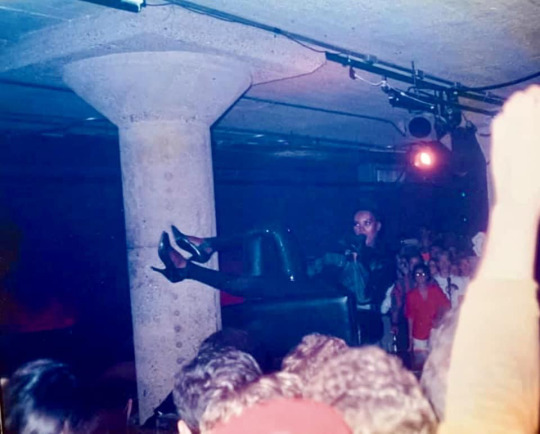
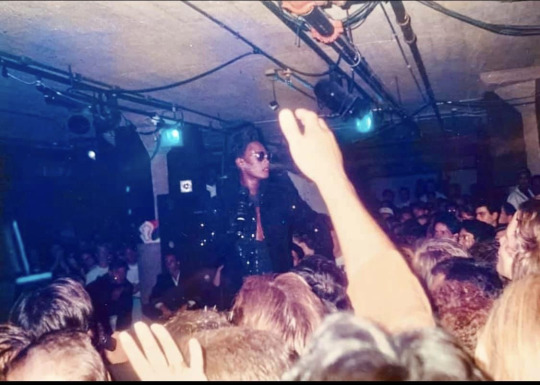
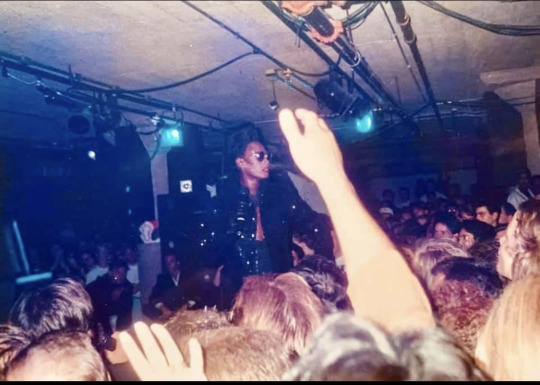
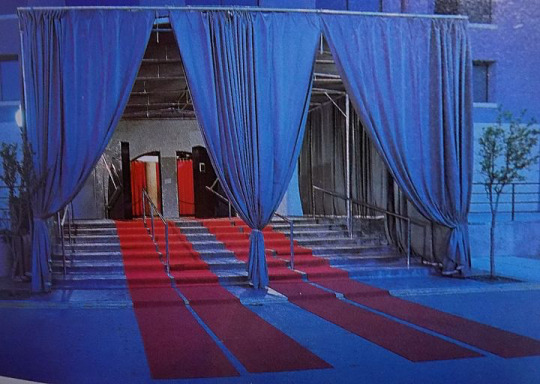
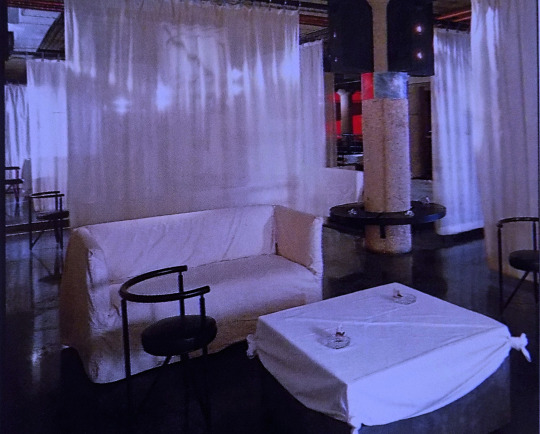
For One Night Only, the Kessler Theater Turns Into the Starck Club
The infamous night club in the West End opened its doors 40 years ago. The Kessler Theater is bringing it back to life, briefly.
The scene at the Starck Club during its peak.
New York City had Studio 54, London had the Hippodrome, and Dallas had The Starck Club.
The West End venue, named for its Parisian designer Philippe Starck, defined the nightlife scene in Dallas throughout the 80s and reveled in the excesses of the decadent decade, powered by a new and curious drug called ecstasy. DJ Mark Ridlen says there’s more to The Starck Club than meets history’s narrow eye, a cultural touchstone that meant far more than the unchecked libido of the clubgoers.
“All they talk about is the drug busts, ‘Who shot J.R.?,’ and the 80s but you’ve never seen a club with such an eclectic lineup over the years whether it was a band, fashion shows, plays, performance art,” Ridlen says. “You name it. They had it.”
The Kessler is bringing back The Starck Club for its 40th anniversary reunion by transforming into the venue for five hours on Sunday May 12 into a new version of the influential Dallas nightclub. Kessler Artistic Director Jeff Liles said the event sold quickly: it took less than a week to sell out. It is not dissimilar to the venue’s tribute to the long-gone Video Bar, a room that was influential in the avant-garde scene of the 1980s.
“We love paying homage to the venues that made Dallas culture what it was,” Liles says. “It was happening right at the same time as the emergence of the Deep Ellum scene.”
Club founder Blake Woodall opened his vision of a hip, technology-filled nightlife spot in 1984 under a Woodall Rodgers overpass near the West End in a converted warehouse space. The first official show for the club’s investors brought Grace Jones and Fleetwood Mac’s Stevie Nicks to its stage.
They were the first of many celebrities to walk through its doors, early adopters before Rob Lowe and Princess Stephanie of Monaco. Talking Heads’ David Byrne dropped in while in town to film his movie True Stories. Members of the famed Brat Pack who starred in movies like The Breakfast Club and Pretty in Pink spent evenings there. Prince even hosted an after party at Starck one night that went “well into the morning,” according to David Hynds, who ran the club’s video and art department with his then wife, Suzie Riddle.
Word of mouth spread mostly by hairdressers to their clients helped build the club’s reputation as a fashion hot spot for the late-night partier. The Starck Club’s popularity started with some exclusivity but eventually, it wasn’t a place where you had to argue with a bouncer to convince them you were important enough to go past the velvet rope.
“Initially, it seemed to have an upper-end feel to it but as time went on, we attracted a much broader range of customers,” Hynds says. “Part of the design and desire was to have a complete mix of all spectrums of people.”
The space wasn’t just used for live music, dancing, and the occasional hit of what we now call Molly. The Starck Club was one giant canvas that a got a new coat of paint every evening.
“We had these funky theme parties,” Ridlen says. “We would make it look like a grocery store or we would make it look like a rodeo. We’d have these fun themes with appropriate music. We’d always have video exhibits, people showing their art videos. We had events just for that.”
ADVERTISEMENT
The club’s first theme party took on the psychedelic. Hynds asked Ridlen if he would create a band that fit its far-out theme. Ridlen’s band was named Lithium X-Mas and the group stayed together long after the club’s closing.
“It was only meant to be a one-time deal but a few months down the road, they decided they would carry it forward under that name,” Hynds says.
The Starck Club served as a kind of zeitgeist thermometer for its time that reflected changing trends and new sounds.
“It was the beginning of the DJ culture in Dallas,” Liles says.
The events on the club’s calendar weren’t just concerts. The Starck Club would host fashion shows, plays, and all kinds of performance art.
“It was a hotbed of all kinds of just really cool activities under one roof,” Ridlen says. “You would come and see that and then, of course, stick around the music.”
No ideas was too off the wall for the Starck Club. Hynds had everyone on the staff pitch ideas for shows, theme nights, and artistic expressions.
“One of the things we did was a furniture fashion show,” Hynds says. “It had the basic design of a fashion show instead of clothing, we had people dressed as furniture movers bringing up furniture. Me and Suzie and [Greg Snyodis] from Lithium X-Mas had the idea of doing a band but instead of audio or music, it was visual. Instead of musical instruments, we used visual instruments.”
So no recreation of the Starck Club would be complete without a reconstruction of its eclectic style. Camron Ware, the owner and founder of Lightware Labs who provided the visual tech for The Kessler’s recreation of the Video Bar, will work with Hines to turn the Kessler into a visual recreation of the Starck Club.
“It’s going to feel like it’s all really immersive when you come in,” Liles says. “There’s going to be a red carpet and everything. We’re really gonna trick out The Kessler that night.”
The Kessler turns into the Starck Club for one night only, from 6 p.m. to 11 p.m. on May 12. Tickets are sold out, but keep your eye on this page. 1230 W. Davis St.
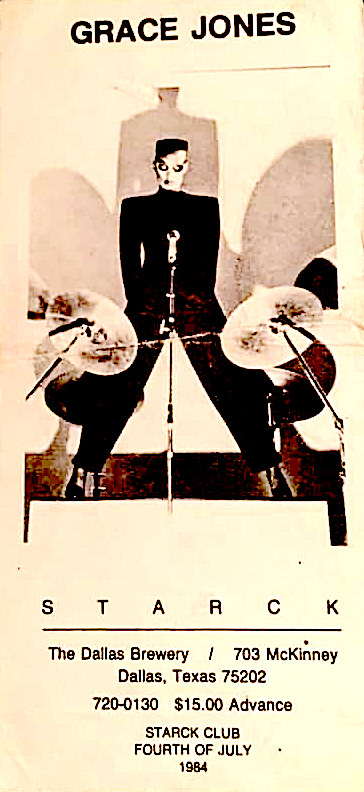

youtube

2 notes
·
View notes
Text
Jan. 2011: "To My Readers"
There’s a tentacle monster on my ceiling.
He’s a knitted lime ball with wiggling appendages
and one large brown eye. He looks vaguely
into the room, perhaps focused on the flat screen on my dresser
or perhaps looking over it.
His gaze is forlorn, his eye half-lidded.
I could call him Weary,
christening him with his attitude.
Unwrapped on Christmas, his tag read,
“Cthulhu Babies” and featured his image
beside an infantile Nyarlathotep,
the Crawling Chaos.
Weary hangs above my desk,
his back to both it and the window.
Perhaps if I turned him about, he might note the wooden zebra
who wears my necklaces on his nose,
or the two mother-enforced plants,
one bearing a tiny plastic sword,
the other a surfing Pikachu.
Batman and Squall Leonhart flank the arrangement,
five and eight inches respectively,
stoic collectively.
More likely, though, Weary’s bored gaze would roll down Tremont St.
Here is the Commons, Boyltson St Outbound in plain sight,
and to the right, the light of the Loews theatre throws red undulations over my ceiling.
Did you know they turn the sign off at about two fourteen in the morning?
I don’t know when they turn it on.
Headlights file down Tremont between orange streetlights,
and if it is a Friday, cars will fill the three lanes,
people will fill the sidewalk,
and you can lie awake and listen to them shout.
#old writing#writing archive#poetry#assignments#addressing the reader#autobiographic#me#tentacles#tentacle monster#10s#2011#Age 20#Boston
4 notes
·
View notes
Note
I know I'm boring, I'm sorry about that, but I don't really know English and I can only understand what Joe says if I transcribe his interviews, so please can you guys do that with his video for GQ and the interviews with Alison? 😭
Don't worry, it's not a problem! 💛 Here is his GQ 10 Essential Items:
Hi GQ, I’m Joe Alwyn and these are my 10 essentials.
Let’s start the essentials the way I start in the morning, which is with coffee. This is the starring French press of the day. You put the coffee in, you put your hot water in, you plunge it down and you drink it straight from this. With a little bit of milk. I'm really not a coffee snob to be honest I don't have like a place I go to get coffee. I just basically drink it and inject into my veins. Coffee.
So, my next essential item is, drum roll, a camera, obviously. This is a Leica camera, a Leica Q. I first saw one of these on the set of The Favorite and Yorgos Lanthimos who was the director of The Favorite would carry one of these around everywhere he goes and take the most beautiful behind the scenes photos. I'll take it on set sometimes, or take it out and about, throw on a shoot or with a group of friends. I’ve always been pretty interested in photography, really I just wanted to copy Yorgos.
My next essential item is a piece of clothing. This is my lucky jacket, and I was actually given it for my 21st birthday. It’s lucky because I wore it when I went to America for the first time, to New York for an audition, which was my first audition, and I got the part. I was lucky enough to get the part, which was a film called Billy Lynn's long Halftime Walk. When I went over there, I turned 24 I think and I didn't know anyone, and my family sent me some flowers I think to the hotel I was staying in and so I found the other day, pressed in here like a card from the flower company and a card from my family. Nostalgic memories.
My next essential items, lighters. I like collecting old lighters and the ones that I brought here today are made by Dunhill. They’re just like old-ish, beautiful well-made objects. Got a few in silver, there’s one in gold. You'd think I would be a smoker but I actually am not really a smoker, however, if you're at a party and you need a cigarette lighter, I’m your guy. They got my initials on, there you are, just in case I forget.
Alright my next essential item is a book. This is the book I'm reading at the moment, Sally Rooney's Beautiful World, Where Are You. That’s a fair question. Sally Rooney is an Irish author who has two books before this, Normal People and Conversations with Friends, which is a show that comes out mid-May 2022. Very long sentences, I’m looking for a short sentence here. ‘She looked up at him quickly and he met her eyes.’ There's a lot of humanity in her writing, I like the way that we can identify with her characters, and I also think she's really funny as a writer.
My next essential item on this lovely list is my watch. I never used to really wear one but I do now. And I have this classical automatic Patek Philippe which is really lovely, really beautifully made. It was actually made in 1991 which is the same year that I was born so it's been ticking for as long as me. In a world of screens and computers it’s just nice to have something like that on your wrist.
My next essential item is a scented candle. I have a bunch of them at home and they’re nice things to take around with you, if you're moving around a lot, and in your hotel room or in a new space or a new place. This particular one is made by Loewe. This particular one is called Cypress Balls. If you do like your in-laws maybe Cypress Balls by Loewe. If you don't like them just get them some tealights, how's that for a pitch?
My next item is another piece of clothing, not old and not so sentimental. It's a pair of track suits that Stella McCartney makes. I really like her clothes and I like her as a person as well and she makes eco-friendly clothes. There, you know, a pair of everyday track suits, you can wear all the time, they’re just comfy and they’re great. Everyone should have them.
The next item is my bike. It's got a couple of wheels, couple of breaks and a nice little seat. Particularly in London yeah I tend to walk or take the tube or the bus anyway, so a bike is a nice way of getting around, a bit of exercise. I wanted like a road bike that was relatively lightweight and would get me from a to b. Which so far, it’s done. I’m not sure it’s like built for wheelies, and I would probably fall off, so we’ll leave showing the wheelie till next time.
My next item on my list is, the suspense, is a painting. It’s a painting by a Cornish painter called Richard Cook. It was a gift when I was 18. He does mainly landscapes of Cornwall, it’s just a place that I've been going all my life, since I was a kid, on kind of family holidays. Everyone packing into the car with dogs and David Bowie or The Beatles on tape. Being in the car for hours and hours and hours, finally getting to Cornwall and jumping into the sea and it being freezing cold but also great. This picture at the moment is on the mantel piece, at home, above the fire.
Thank you for watching, these with my 10 essential items.
13 notes
·
View notes
Text
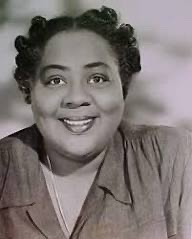
Louise Beavers (March 8, 1900 – October 26, 1962) was a film and television actress. She appeared in dozens of films and two hit television shows from (1920s-60) most often cast in the role of a maid, servant, or slave. She was a native of Cincinnati.
She was a breakthrough actress for African American women and became known as a symbol of a “mammy” on the screen. A mammy archetype “is the portrayal within a narrative framework or other imagery of an African American domestic servant, generally good-natured, often overweight, and loud”.
In Pasadena, she attended school and engaged in several after-school activities, such as basketball and church choir. Her mother worked as a voice teacher and taught her how to sing for concerts. She graduated from Pasadena High School. She worked as a dressing room attendant for a photographer and served as a personal maid to film star Leatrice Joy.
How she began her acting career is unclear. She was in a group called the Lady Minstrels which was a group of young women who staged amateur productions and appeared on stage at the Loews State Theatre. Either her career began with her performance in the Lady Minstrels or in a contest at the Philharmonic Auditorium, which occurred later. Charles Butler from the Central Casting Bureau, who was known for being an agent for African American actors, saw the performance and recommended that she try for a role in a movie. At first, she was hesitant to try out for movies because of how African Americans were portrayed in movies and how Hollywood encouraged these roles. She once said, “In all the pictures I had seen… they never used colored people for anything except savages.” Despite this, she tried out for a part in the film Uncle Tom’s Cabin and gained the role.
She was inducted into the Black Filmmakers Hall of Fame in 1976. #africanhistory365 #africanexcellence #sigmagammarho #womenhistorymonth
0 notes
Text
Loewe xelos a 20 bedienungsanleitung target
LOEWE XELOS A 20 BEDIENUNGSANLEITUNG TARGET >> DOWNLOAD LINK
vk.cc/c7jKeU
LOEWE XELOS A 20 BEDIENUNGSANLEITUNG TARGET >> READ ONLINE
bit.do/fSmfG
war alles vorhanden und in Folie eingeschweißt. Anleitung war gut zu lesen. Halterung ist ausziehbar, sowie neigbar. Einzig vllt. dass der Einstellwinkel and target group for this study and the EuP directive in more detail. 20 IFIAS, Energy Analysis Workshop on Methodology and Conventions, no.Willkommen bei DeTeWe TA 33clip Bedienungsanleitung Vielen Dank, .tumblr.com/post/691664569425346560/loewe-xelos-32-media-bedienungsanleitung-polar, Auf dieser Seite können Sie komplett kostenlos herunterladen Handbuch Loewe Xelos A 20 DVB-T. PDF Handbuch hat 28 Seiten und ihre Größe ist 4.24 Mb. ▾. External sources (German) · If you wish to integrate the Loewe Xelos SL in a particularly elegant and. [] intelligent manner into your room, keep the Simply mark the input OK call channel list, field for this, the Loewe app displays automatically a keyboard symbol. Page 20: On-Screen Displays. Loewe bild User Für die Navigation mit einer 20 GB Festplatte, das 7-Zoll-TFT-Farbdisplay, Innovation und 16:9 HD-ILA Hybrid-TV Loewe Marke: Xelos A 20 Bezeichnung:
https://getamedaw.tumblr.com/post/693353539026747392/mini-speaker-ws-887-bedienungsanleitung-deutsch, https://getamedaw.tumblr.com/post/693353539026747392/mini-speaker-ws-887-bedienungsanleitung-deutsch, https://getamedaw.tumblr.com/post/693353606392496129/avm-fritz-powerline-546e-handbuch-iphone, https://getamedaw.tumblr.com/post/693353539026747392/mini-speaker-ws-887-bedienungsanleitung-deutsch, https://fuhirupefe.tumblr.com/post/693353630213013504/sharp-er-1875-handbuch-ipad.
0 notes
Photo

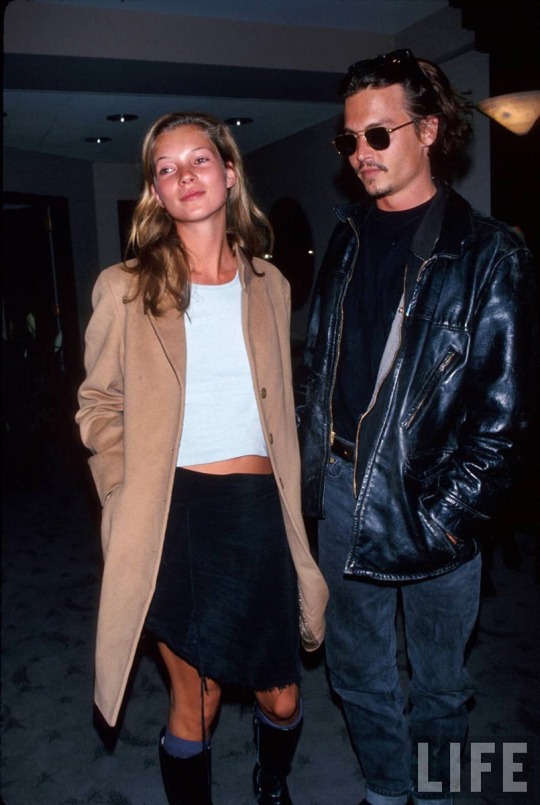







28 years ago (1994), on this day (April 5) Johnny Depp and Kate Moss attended the premiere of John Waters’ movie “Serial Mom” at the Loews Screening Room, in New York City.
Double sunglasses at night, an inside out t-shirt with double jacket (being one in leather) jeans and boots?
Yes, only Johnny Depp.
#Johnny Depp#Kate Moss#Serial Mom#New York Premiere#Attending Events#Loews Screening Room#New York City#90's Fashion#Fashion Couple#April 1994
121 notes
·
View notes
Text




Johnny Depp and Kate Moss attend the "Serial Mom" New York Premiere at Loews Screening Room in New York City, New York (April 04, 1994)
#johnny depp#celeb#icon#actor#john christopher depp ii#musician#ilovejohnnydepp#iloveyoujohnnydepp#kate moss#serial mom#new york new york#1994#1990s films#early 1990s#1990s icons#1990s hollywood#1990s actors#1990s movies#1990s
40 notes
·
View notes
Text


David Byrne and his mother attending the “Serial Mom” New York City Premiere at Loews Screening Room
April 4, 1994
#david byrne#talking heads#music#new wave#post punk#art pop#avant funk#worldbeat#90’s music#90’s#1994
56 notes
·
View notes
Text
Hattie McDaniel

Hattie McDaniel (June 10, 1893 – October 26, 1952) was an American actress, singer-songwriter, and comedian. She won the Academy Award for Best Supporting Actress for her role as "Mammy” in Gone with the Wind (1939), becoming the first African American to win an Oscar.
In addition to acting in many films, McDaniel recorded 16 blues sides between 1926–1929 (10 were issued) and was a radio performer and television star; she was the first black woman to sing on radio in the United States. She appeared in over 300 films, although she received screen credits for only 83.
Encountering racism and racial segregation throughout her career, McDaniel was unable to attend the premiere of Gone with the Wind in Atlanta because it was held at a whites-only theater, and at the Oscars ceremony in Los Angeles she sat at a segregated table at the side of the room; the Ambassador Hotel where the ceremony was held was for whites only, but allowed McDaniel in as a favor. When she died in 1952, her final wish--to be buried in Hollywood Cemetery--was denied because the graveyard was restricted to whites only.
McDaniel has two stars on the Hollywood Walk of Fame in Hollywood: one at 6933 Hollywood Boulevard for her contributions to radio; and one at 1719 Vine Street for acting in motion pictures. She was inducted into the Black Filmmakers Hall of Fame in 1975, and in 2006 she became the first black Oscar winner honored with a U.S. postage stamp. In 2010, she was inducted into the Colorado Women's Hall of Fame.
McDaniel, the youngest of 13 children, was born in Denver in 1893 to formerly-enslaved parents in Wichita, Kansas. Her mother, Susan Holbert (1850–1920), was a singer of gospel music, and her father, Henry McDaniel (1845–1922), fought in the Civil War with the 122nd United States Colored Troops. In 1900, the family moved to Colorado, living first in Fort Collins and then in Denver, where Hattie attended Denver East High School (1908-1910) and in 1908 entered a contest sponsored by the Women’s Christian Temperance Union, reciting "Convict Joe", later claiming she had won first place. Her brother, Sam McDaniel (1886–1962), played the butler in the 1948 Three Stooges' short film Heavenly Daze. Her sister Etta McDaniel was also an actress.
McDaniel was a songwriter as well as a performer. She honed her songwriting skills while working with her brother Otis McDaniel's carnival company, a minstrel show. McDaniel and her sister Etta Goff launched an all-female minstrel show in 1914 called the McDaniel Sisters Company. After the death of her brother Otis in 1916, the troupe began to lose money, and Hattie did not get her next big break until 1920. From 1920 to 1925, she appeared with Professor George Morrison's Melody Hounds, a black touring ensemble. In the mid-1920s, she embarked on a radio career, singing with the Melody Hounds on station KOA in Denver. From 1926 to 1929, she recorded many of her songs for Okeh Records and Paramount Records in Chicago. McDaniel recorded seven sessions: one in the summer of 1926 on the rare Kansas City label Meritt; four sessions in Chicago for Okeh from late 1926 to late 1927 (of the 10 sides recorded, only four were issued), and two sessions in Chicago for Paramount in March 1929.
After the stock market crashed in 1929, McDaniel could only find work as a washroom attendant at Sam Pick's Club Madrid near Milwaukee. Despite the owner's reluctance to let her perform, she was eventually allowed to take the stage and soon became a regular performer.
In 1931, McDaniel moved to Los Angeles to join her brother Sam, and sisters Etta and Orlena. When she could not get film work, she took jobs as a maid or cook. Sam was working on a KNX radio program, The Optimistic Do-Nut Hour, and was able to get his sister a spot. She performed on radio as "Hi-Hat Hattie", a bossy maid who often "forgets her place". Her show became popular, but her salary was so low that she had to keep working as a maid. She made her first film appearance in The Golden West (1932), in which she played a maid. Her second appearance came in the highly successful Mae West film I'm No Angel (1933), in which she played one of the black maids with whom West camped it up backstage. She received several other uncredited film roles in the early 1930s, often singing in choruses. In 1934, McDaniel joined the Screen Actors Guild. She began to attract attention and landed larger film roles, which began to win her screen credits. Fox Film Corporation put her under contract to appear in The Little Colonel (1935), with Shirley Temple, Bill "Bojangles" Robinson and Lionel Barrymore.
Judge Priest (1934), directed by John Ford and starring Will Rogers, was the first film in which she played a major role. She had a leading part in the film and demonstrated her singing talent, including a duet with Rogers. McDaniel and Rogers became friends during filming. In 1935, McDaniel had prominent roles, as a slovenly maid in Alice Adams (RKO Pictures); a comic part as Jean Harlow's maid and traveling companion in China Seas (MGM) (McDaniels's first film with Clark Gable); and as the maid Isabella in Murder by Television, with Béla Lugosi. She appeared in the 1938 film Vivacious Lady, starring James Stewart and Ginger Rogers. McDaniel had a featured role as Queenie in the 1936 film Show Boat (Universal Pictures), starring Allan Jones and Irene Dunne, in which she sang a verse of Can't Help Lovin' Dat Man with Dunne, Helen Morgan, Paul Robeson, and a black chorus. She and Robeson sang "I Still Suits Me", written for the film by Kern and Hammerstein. After Show Boat, she had major roles in MGM's Saratoga (1937), starring Jean Harlow and Clark Gable; The Shopworn Angel (1938), with Margaret Sullavan; and The Mad Miss Manton (1938), starring Barbara Stanwyck and Henry Fonda. She had a minor role in the Carole Lombard–Frederic March film Nothing Sacred (1937), in which she played the wife of a shoeshine man (Troy Brown) masquerading as a sultan.
McDaniel was a friend of many of Hollywood's most popular stars, including Joan Crawford, Tallulah Bankhead, Bette Davis, Shirley Temple, Henry Fonda, Ronald Reagan, Olivia de Havilland, and Clark Gable. She starred with de Havilland and Gable in Gone with the Wind (1939). Around this time, she was criticized by members of the black community for the roles she accepted and for pursuing roles aggressively rather than rocking the Hollywood boat. For example, in The Little Colonel (1935), she played one of the black servants longing to return to the Old South, but her portrayal of Malena in RKO Pictures's Alice Adams angered white Southern audiences, because she stole several scenes from the film's white star, Katharine Hepburn. McDaniel ultimately became best known for playing a sassy, opinionated maid.
The competition to win the part of Mammy in Gone with the Wind was almost as fierce as that for Scarlett O'Hara. First Lady Eleanor Roosevelt wrote to film producer David O. Selznick to ask that her own maid, Elizabeth McDuffie, be given the part. McDaniel did not think she would be chosen because she had earned her reputation as a comic actress. One source claimed that Clark Gable recommended that the role be given to McDaniel; in any case, she went to her audition dressed in an authentic maid's uniform and won the part.
Upon hearing of the planned film adaptation, the National Association for the Advancement of Colored People (NAACP) fought hard to require the film's producer and director to delete racial epithets from the movie (in particular the offensive slur "nigger") and to alter scenes that might be incendiary and that, in their view, were historically inaccurate. Of particular concern was a scene from the novel in which black men attack Scarlett O'Hara, after which the Ku Klux Klan, with its long history of provoking terror on black communities, is presented as a savior. Throughout the South, black men were being lynched based upon false allegations they had harmed white women. That attack scene was altered, and some offensive language was modified, but another epithet, "darkie", remained in the film, and the film's message with respect to slavery remained essentially the same. Consistent with the book, the film's screenplay also referred to poor whites as "white trash", and it ascribed these words equally to characters black and white.
Loew's Grand Theater on Peachtree Street in Atlanta, Georgia was selected by the studio as the site for the Friday, December 15, 1939 premiere of Gone with the Wind. Studio head David O. Selznick asked that McDaniel be permitted to attend, but MGM advised him not to, because of Georgia's segregation laws. Clark Gable threatened to boycott the Atlanta premiere unless McDaniel were allowed to attend, but McDaniel convinced him to attend anyway.
Most of Atlanta's 300,000 citizens crowded the route of the seven-mile motorcade that carried the film's other stars and executives from the airport to the Georgian Terrace Hotel, where they stayed. While Jim Crow laws kept McDaniel from the Atlanta premiere, she did attend the film's Hollywood debut on December 28, 1939. Upon Selznick's insistence, her picture was also featured prominently in the program.
For her performance as the house slave who repeatedly scolds her owner's daughter, Scarlett O'Hara (Vivien Leigh), and scoffs at Rhett Butler (Clark Gable), McDaniel won the 1939 Academy Award for Best Supporting Actress, the first black actor to have been nominated and win an Oscar. "I loved Mammy," McDaniel said when speaking to the white press about the character. "I think I understood her because my own grandmother worked on a plantation not unlike Tara." Her role in Gone with the Wind had alarmed some whites in the South; there were complaints that in the film she had been too "familiar" with her white owners. At least one writer pointed out that McDaniel's character did not significantly depart from Mammy's persona in Margaret Mitchell's novel, and that in both the film and the book, the much younger Scarlett speaks to Mammy in ways that would be deemed inappropriate for a Southern teenager of that era to speak to a much older white person, and that neither the book nor the film hints of the existence of Mammy's own children (dead or alive), her own family (dead or alive), a real name, or her desires to have anything other than a life at Tara, serving on a slave plantation. Moreover, while Mammy scolds the younger Scarlett, she never crosses Mrs. O'Hara, the more senior white woman in the household. Some critics felt that McDaniel not only accepted the roles but also in her statements to the press acquiesced in Hollywood's stereotypes, providing fuel for critics of those who were fighting for black civil rights. Later, when McDaniel tried to take her "Mammy" character on a road show, black audiences did not prove receptive.
While many black people were happy over McDaniel's personal victory, they also viewed it as bittersweet. They believed Gone With the Wind celebrated the slave system and condemned the forces that destroyed it. For them, the unique accolade McDaniel had won suggested that only those who did not protest Hollywood's systemic use of racial stereotypes could find work and success there.
The Twelfth Academy Awards took place at the Coconut Grove Restaurant of the Ambassador Hotel in Los Angeles. It was preceded by a banquet in the same room. Louella Parsons, an American gossip columnist, wrote about Oscar night, February 29, 1940:
Hattie McDaniel earned that gold Oscar by her fine performance of 'Mammy' in Gone with the Wind. If you had seen her face when she walked up to the platform and took the gold trophy, you would have had the choke in your voice that all of us had when Hattie, hair trimmed with gardenias, face alight, and dress up to the queen's taste, accepted the honor in one of the finest speeches ever given on the Academy floor.
Academy of Motion Picture Arts and Sciences, fellow members of the motion picture industry and honored guests: This is one of the happiest moments of my life, and I want to thank each one of you who had a part in selecting me for one of their awards, for your kindness. It has made me feel very, very humble; and I shall always hold it as a beacon for anything that I may be able to do in the future. I sincerely hope I shall always be a credit to my race and to the motion picture industry. My heart is too full to tell you just how I feel, and may I say thank you and God bless you.
McDaniel received a plaque-style Oscar, approximately 5.5 inches by 6 inches, the type awarded to all Best Supporting Actors and Actresses at that time. She and her escort were required to sit at a segregated table for two at the far wall of the room; her white agent, William Meiklejohn, sat at the same table. The hotel had a strict no-blacks policy, but allowed McDaniel in as a favor. The discrimination continued after the award ceremony as well as her white co-stars went to a "no-blacks" club, where McDaniel was also denied entry. Another black woman did not win an Oscar again for 50 years, with Whoopi Goldberg winning Best Supporting Actress for her role in Ghost. Weeks prior to McDaniel winning her Oscar, there was even more controversy. David Selznick, the producer of Gone With the Wind, omitted the faces of all the black actors on the posters advertising the movie in the South. None of the black cast members were allowed to attend the premiere for the movie.
Gone with the Wind won eight Academy Awards. It was later named by the American Film Institute (AFI) as number four among the top 100 American films of all time in the 1998 ranking and number six in the 2007 ranking.
In the Warner Bros. film In This Our Life (1942), starring Bette Davis and directed by John Huston, McDaniel once again played a domestic, but one who confronts racial issues when her son, a law student, is wrongly accused of manslaughter. McDaniel was in the same studio's Thank Your Lucky Stars (1943), with Humphrey Bogart and Bette Davis. In its review of the film, Time wrote that McDaniel was comic relief in an otherwise "grim study," writing, "Hattie McDaniel, whose bubbling, blaring good humor more than redeems the roaring bad taste of a Harlem number called Ice Cold Katie". McDaniel continued to play maids during the war years for Warners in The Male Animal (1942) and United Artists' Since You Went Away (1944), but her feistiness was toned down to reflect the era's somber news. She also played the maid in Song of the South (1946) for Disney.
She made her last film appearances in Mickey (1948) and Family Honeymoon (1949), where that same year, she appeared on the live CBS television program The Ed Wynn Show. She remained active on radio and television in her final years, becoming the first black actor to star in her own radio show with the comedy series Beulah. She also starred in the television version of the show, replacing Ethel Waters after the first season. (Waters had apparently expressed concerns over stereotypes in the role.) Beulah was a hit, however, and earned McDaniel $2,000 per week; however, the show was controversial. In 1951, the United States Army ceased broadcasting Beulah in Asia because troops complained that the show perpetuated negative stereotypes of black men as shiftless and lazy and interfered with the ability of black troops to perform their mission. After filming a handful of episodes, however, McDaniel learned she had breast cancer. By the spring of 1952, she was too ill to work and was replaced by Louise Beavers.
As her fame grew, McDaniel faced growing criticism from some members of the black community. Groups such as the NAACP complained that Hollywood stereotypes not only restricted black actors to servant roles but often portrayed them as lazy, dim-witted, satisfied with lowly positions, or violent. In addition to addressing the studios, they called upon actors, and especially leading black actors, to pressure studios to offer more substantive roles and at least not pander to stereotypes. They also argued that these portrayals were unfair as well as inaccurate and that, coupled with segregation and other forms of discrimination, such stereotypes were making it difficult for all black people, not only actors, to overcome racism and succeed in the entertainment industry. Some attacked McDaniel for being an "Uncle Tom"—a person willing to advance personally by perpetuating racial stereotypes or being an agreeable agent of offensive racial restrictions. McDaniel characterized these challenges as class-based biases against domestics, a claim that white columnists seemed to accept. And she reportedly said, "Why should I complain about making $700 a week playing a maid? If I didn't, I'd be making $7 a week being one."
McDaniel may also have been criticized because, unlike many other black entertainers, she was not associated with civil rights protests and was largely absent from efforts to establish a commercial base for independent black films. She did not join the Negro Actors Guild of America until 1947, late in her career. McDaniel hired one of the few white agents who would represent black actors at the time, William Meiklejohn, to advance her career. Evidence suggests her avoidance of political controversy was deliberate. When columnist Hedda Hopper sent her Richard Nixon placards and asked McDaniel to distribute them, McDaniel declined, replying she had long ago decided to stay out of politics. "Beulah is everybody's friend," she said. Since she was earning a living honestly, she added, she should not be criticized for accepting such work as was offered. Her critics, especially Walter White of the NAACP, claimed that she and other actors who agreed to portray stereotypes were not a neutral force but rather willing agents of black oppression.
McDaniel and other black actresses and actors feared that their roles would evaporate if the NAACP and other Hollywood critics complained too loudly. She blamed these critics for hindering her career and sought the help of allies of doubtful reputation. After speaking with McDaniel, Hedda Hopper even claimed that McDaniel's career troubles were not the result of racism but had been caused by McDaniel's "own people".
In August 1950, McDaniel suffered a heart ailment and entered Temple Hospital in semi-critical condition. She was released in October to recuperate at home, and she was cited by United Press on January 3, 1951, as showing "slight improvement in her recovery from a mild stroke."
McDaniel died of breast cancer at age 59 on October 26, 1952, in the hospital on the grounds of the Motion Picture House in Woodland Hills, California. She was survived by her brother Sam McDaniel. Thousands of mourners turned out to celebrate her life and achievements. In her will, McDaniel wrote,
"I desire a white casket and a white shroud; white gardenias in my hair and in my hands, together with a white gardenia blanket and a pillow of red roses. I also wish to be buried in the Hollywood Cemetery".
Hollywood Cemetery, on Santa Monica Boulevard in Hollywood, is the resting place of movie stars such as Douglas Fairbanks and Rudolph Valentino. Its owner at the time, Jules Roth, refused to allow her to be buried there, because, at the time of McDaniel's death, the cemetery practiced racial segregation and would not accept the remains of black people for burial. Her second choice was Rosedale Cemetery (now known as Angelus-Rosedale Cemetery), where she lies today.
In 1999, Tyler Cassidy, the new owner of the Hollywood Cemetery (renamed the Hollywood Forever Cemetery), offered to have McDaniel re-interred there. Her family did not wish to disturb her remains and declined the offer. Instead, Hollywood Forever Cemetery built a large cenotaph on the lawn overlooking its lake. It is one of Hollywood's most popular tourist attractions.
McDaniel's last will and testament of December 1951 bequeathed her Oscar to Howard University, where she had been honored by the students with a luncheon after she had won her Oscar. At the time of her death, McDaniel would have had few options. Very few white institutions in that day preserved black history. Historically, black colleges had been where such artifacts were placed. Despite evidence McDaniel had earned an excellent income as an actress, her final estate was less than $10,000. The IRS claimed the estate owed more than $11,000 in taxes. In the end, the probate court ordered all of her property, including her Oscar, sold to pay off creditors. Years later, the Oscar turned up where McDaniel wanted it to be: Howard University, where, according to reports, it was displayed in a glass case in the university's drama department.
The whereabouts of McDaniel's Oscar are currently unknown. In 1992, Jet magazine reported that Howard University could not find it and alleged that it had disappeared during protests in the 1960s. In 1998, Howard University stated that it could find no written record of the Oscar having arrived at Howard. In 2007, an article in The Huffington Post repeated rumors that the Oscar had been cast into the Potomac River by angry civil rights protesters in the 1960s. The assertion reappeared in The Huffington Post under the same byline in 2009.
In 2010, Mo'Nique, the winner of the Oscar for Best Supporting Actress in Precious, wearing a blue dress and gardenias in her hair, as McDaniel had at the ceremony in 1940, in her acceptance speech thanked McDaniel "for enduring all that she had to so that I would not have to". Her speech revived interest in the whereabouts of McDaniel's Oscar.
In November 2011, W. B. Carter, of the George Washington University Law School, published the results of her year-and-a-half-long investigation into the Oscar's fate. Carter rejected claims that students had stolen the Oscar (and thrown it in the Potomac River) as wild speculation or fabrication that traded on long-perpetuated stereotypes of blacks. She questioned the sourcing of The Huffington Post stories. Instead, she argued that the Oscar had likely been returned to Howard University's Channing Pollack Theater Collection between the spring of 1971 and the summer of 1973 or had possibly been boxed and stored in the drama department at that time. The reason for its removal, she argued, was not civil rights unrest but rather efforts to make room for a new generation of black performers. If neither the Oscar nor any paper trail of its ultimate destiny can be found at Howard today, she suggested, inadequate storage or record-keeping in a time of financial constraints and national turbulence may be blamed. She also suggested that a new generation of caretakers may have failed to realize the historic significance of the award.
https://en.wikipedia.org/wiki/Hattie_McDaniel
36 notes
·
View notes
Text
LUCY SHUNS AUDITIONS
July 21, 1950

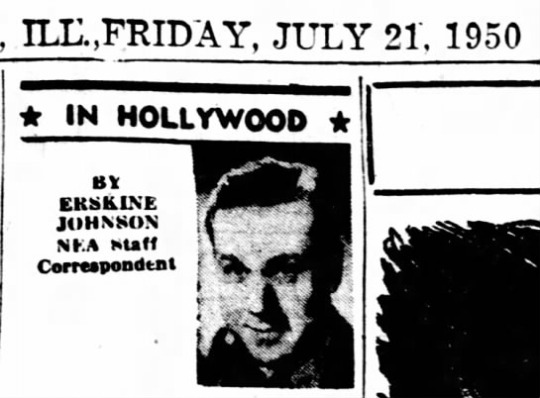
[In the below article, reprinted verbatim, Johnson writes using a lot of imagery and insider jargon. This sort of article was common in trade papers like Variety, but seems odd in a daily newspaper.]
Hollywood—(NEA) Lucille Ball slipped me the lowdown on her failure to pin to the canvas the dumb chick role in “Born Yesterday” and make it holler uncle. (1)
She’s got a touch of Francis the mule in her when it comes to auditions. (2)
Instead of scrimmaging for the role with Evelyn Keyes, Judy Holliday, Marie Wilson, Shelly Winters and Jan Sterling, (3) Lucille went bolting the other way.
The “let’s-see-if-you’re-it” boys pleaded and cajoled.
But Miss Anti-Auditions wasn’t having any of the competition, thank you.
“I figure if they want you, they want you,” Lucille plainspoke it. If you’ve got to read and test for it, to heck with it.’
She isn’t chronicled in Hollywood history, but once, badgered by her RKO bosses, Lucille went tripping over to David O. Selznick’s office for a whack at the Scarlett O’Hara role in “Gone With the Wind.”
That’s what curdled her in the first place.
“It was awful,’’ Lucille shudders. I was shaking all over when I hit Selznick’s office. My knees gave way. I did the whole audition in scrubwoman position. Selznick laughs and says thanks a lot. (4)
Judy Holliday landed the junkman’s doll role and Lucille grabbed a railroad ticket for a personal appearance tour with hubby Desi Arnaz. She strutted to Latin rhythms, swung a glittering purse in a manner dear to runaway girls and wisecracked for the customers. (5)
MIMICS OSCAR WINNER
At the last moment she nixed a dancing and singing routine. The star with the forest-fire hair shrugged:
“I decided it would be silly to compete with Grable.” (6)
A lot of movie queens laid in fresh supplies of smelling salts, ice beanies and copies of “Release From Nervous Tension” when word got around that Lucille was about to whoop it up on the six-a-day circuit. (7)
She’s a blister-raiser from way back and the air was shrill with ouches about a year ago when she whipped up an impression of an Academy Award winner.
But the girls can go back to worrying about other things—like shrinking from larger-than-life to television screen size.
Lucille didn’t let any “furriners” see the routine.
“It's for Hollywood only," she said. “I should take radio-active material on the road?”
Her Oscar-grabber routine is strictly for unreal anyhow, she says. and no blood relation to Bette Davis, Olivia de Havilland, Ingrid Bergman or any other Screen Duse. (8) She insisted:
“She's any movie star, even me. This character has to go up on that stage and act surprised. She’s only been rehearsing what she's going say flor eight weeks. So she says, ‘Ye gads, me? But I’m so unprepared. Really, I didn’t dream...”
Lucille is generally is as unflinching about the movie queen business as Pearl White was about onrushing trains. (9)
But her knees executed some wobbles that aren’t in Arthur Murray’s rhumba dance book when she checked into her first vaudeville dressing room. (10)
“Those stages—they’re so big.” she gasped. “Hey, I’d hate to get caught in the middle of one of those stages without bread and water.”
Lucille didn’t take any chances with out-of-town press interviews, either. “I once did a personal appearance tour with Maureen O'Hara and had to show up at a press party,” she grinned. (11)
My sinus - I just die from it - was acting up. The reporter next to me didn’t understand my puffed eyes and cold sores. He called Maureen a lady in his story. But he referred to me as a whisky tenor with red-runny eyes.”
Lucille’s brain cells work on direct current and she’s not one to make with the figure eights when a straight glide to home base would get her there quicker.
They still laugh about her exit line to Louis B. Mayer. (12) Mayer always referred to her as a thoroughbred and sometimes compared her to his famous horses. "Yes, and like your other nags, I'm leaving your stable," Lucille said when she decided to bow out of her contract.
She has high hopes for her new picture “The Fuller Brush Man.” Not that she enjoyed it: (13)
“Honey, this ones that I don t enjoy turn out be the best ones. This one put me in the hospital. My feet are still bandaged up. I’m a mess. No more physical-type pictures for me.”
# # #
FOOTNOTES FROM THE FUTURE
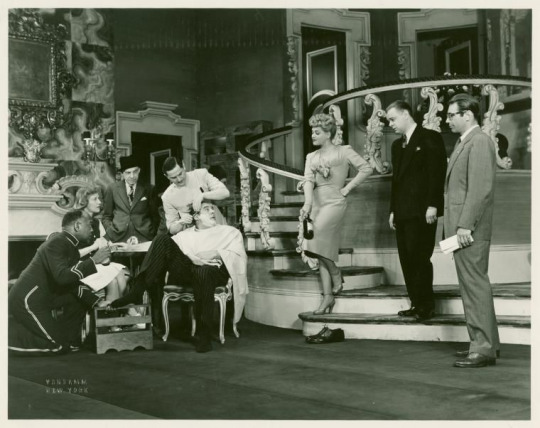
(1) The 1946 Broadway hit comedy Born Yesterday by Garsin Kanin was bought by Columbia Pictures. Things got complicated when its stage star, Judy Holliday, swore she would not do the film version. Columbia used this as fuel for publicity about who would win the role. Naturally, Lucille Ball was considered a top contender. As the article states, she was not eager, however, to prove her worth to the ‘let’s-see-if-you’re-it’ boys (aka producers). There was talk of Lucille performing the play in London, or summer stock, but her film contracts would not allow her time off for a stage run.

(2) Mules are supposedly notoriously stubborn animals - just like Lucy. Francis the Talking Mule was the star of seven popular Universal-International film comedies. The character originated in the 1946 novel Francis by David Stern III, adapting his own script for the first entry, simply titled Francis. On “I Love Lucy” Fred Mertz sometimes called Ethel “Francis” to indicate she was being stubborn about something.

(3) These were some of the Hollywood stars looking to play the part of Billie Dawn in the film Born Yesterday. Evelyn Keyes (1916 – 2008) was best known for playing Sue Ellen, Scarlett O’Hara’s kid sister, in Gone With The Wind (1939). Judy Holliday (1921-65), changed her mind about playing the role she originated on Broadway, but by then the casting net was cast, and she was just another performer on the short list. She eventually got the role, which defined her career. Marie Wilson (1916-72) was a zany comedic actress in the style of Gracie Burns. She was widely known as the star of radio and TV’s “My Friend Irma”. Shelley Winters (1920-2006) would be nominated for an Oscar the year after this article. She was adept at playing drama and comedy, and had a long-lasting career in Hollywood. She appeared on “Here’s Lucy” in 1968; Critics raved about her Jan Sterling’s portrayal of Billie Dawn in the Chicago touring company of Born Yesterday and Columbia brought her out to the West Coast to test for the film. At one point, she was actually announced to play the part but the role ultimately went to Holliday.

(4) Lucille Ball did indeed read (not screen test) for the role of Scarlet O’Hara, just like nearly all of the women in Hollywood in 1938. Ball told the story several times on television, each time with varying details, but probably most completely on “Bob Hope’s Unrehearsed Antics of The Stars” (1984).
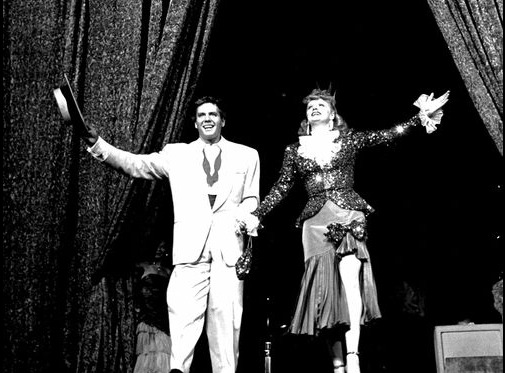
(5) This is a vivid description of the “Cuban Pete / Sally Sweet” portion of Lucy and Desi’s nightclub act to convince sponsors to buy them as a couple.
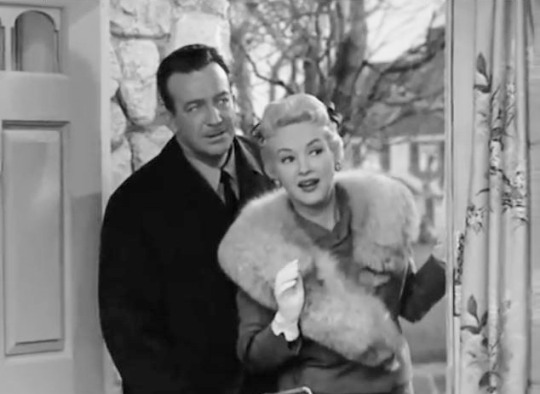
(6) Betty Grable (1916-73) was considered one of the most famous pin-up girls in history. In addition to her million dollar gams (legs), she could sing, dance, and act, too. She guest starred with her then-husband Harry James on “Lucy Wins A Racehorse”, an installment of “The Lucy-Desi Comedy Hour” aired on February 3, 1958.
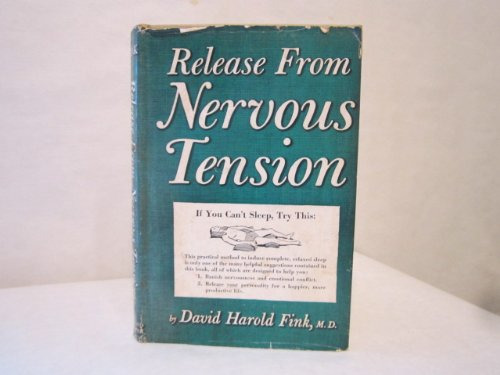
(7) “Release from Nervous Tension” was an actual best-selling book by Dr. David Harold Fink, published in 1950. Vaudeville and Burlesque shows were often known as the ‘six-a-day circuit’ because sometimes there would be as many as six performances of the same act in a day. Naturally, this did not apply to Lucy and Desi, who were big film and radio stars at the time.
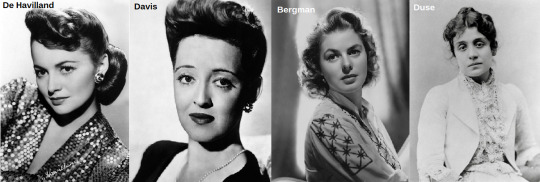
(8) These were some of Hollywood’s top-line dramatic actors. Bette Davis (1908-89) had won two Oscars, and was nominated for several others during her long career. She was supposed to guest-star on “The Lucy-Desi Comedy Hour” in “The Celebrity Next Door” in 1957 but dropped out after a horse-riding accident, leaving the role to Tallulah Bankhead; Olivia de Havilland (1916-2020) had also won two Oscars, the second the year this article was published. She was best remembered for playing Melanie Wilkes in Gone With The Wind (1939); Ingrid Bergman (1915-82) was a Swedish-born actress, who, by career’s end, had scored three Academy Awards. When Johnson talks about “any other screen Duse” he is referring to Eleonor Duse (1858-1924), an Italian-born stage actress known for her grand, dramatic style.

(9) Pearl White (1889-1938) was best known as the silent film actress who was tied to the railroad tracks in “The Perils of Pauline” (1914).
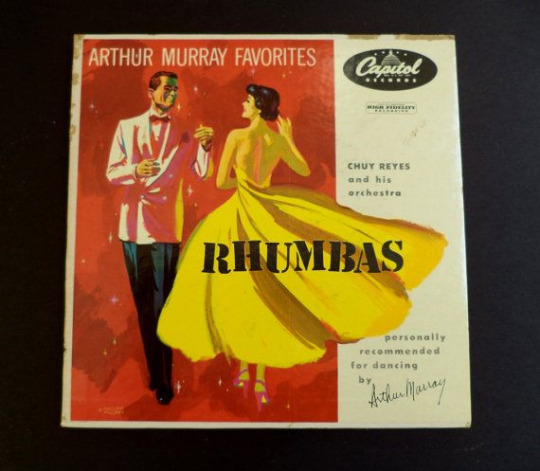
(10) Arthur Murray (1895-1991) was a ballroom dancer and businessman best known for the chain of dancing schools that bear his name. Murray was often a punchline on “I Love Lucy,” especially when the subject of dancing came up. The Rhumba was a Latin dance that took America by storm in the late 1940s and 1950. Desi Arnaz often called his orchestra a ‘rhumba band.’
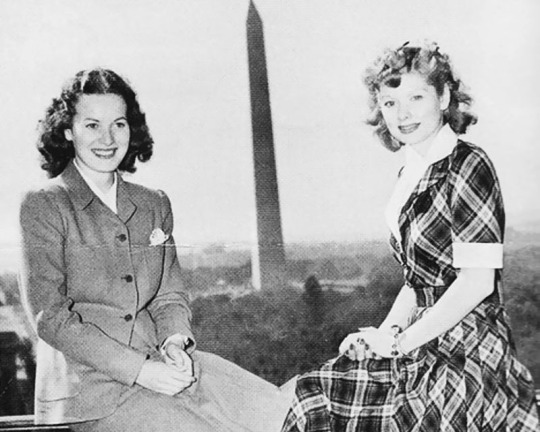
(11) Maureen O’Hara (1920-2015) and Lucille Ball had starred in Dance, Girl, Dance in 1940. As a result, the two went on a promotional tour that took them to several US cities, including the nation’s capitol.
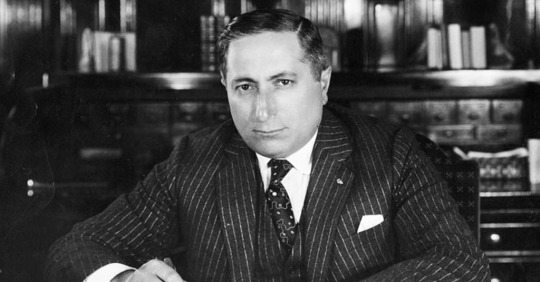
(12) Louis B. Meyer (1884-1957), along with Samuel Goldwyn and Marcus Loew of Metro Pictures, had formed a new motion picture company called Metro-Goldwyn-Mayer (MGM) in 1918. Over the next 25 years, MGM was "the Tiffany of the studios," producing more films and movie stars than any other studio in the world. Mayer became the highest-paid man in America, and one of the country's most successful horse breeders. Both he and MGM reached their peaks at the end of World War II, and Mayer was forced out in 1951, just a year after this article was written.
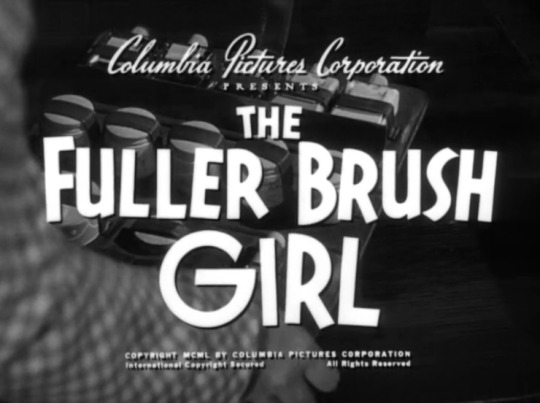
(13) Erskine Johnson gets the title wrong. Lucille had madeThe Fuller Brush Girl, a sequel to The Fuller Brush Man (1948). The film was released in mid-September 1950.
#Lucille Ball#Erskine Johnson#Newspaper#Fuller Brush Girl#Born Yesterday#Judy Holliday#MGM#Louis B. Mayer#Pearl White#Olivia DeHavilland#Bette Davis#Ingrid Bergman#Release from Nervous Tension#Eleonor Duse#Betty Grable#Desi Arnaz#Gone With The Wind
3 notes
·
View notes
Text
Three futures - The Playboy
So what happens to James, Lauren, Kerry and all the gang after Shadow Wave?
Robert Muchamore has written three stories, depicting alternative futures for James and Kerry set in the year 2031.
Las Vegas - October 2031
James Choke sat at the end of an emperor-size bed. He was in a 53rd floor penthouse suite with floor-to-ceiling windows that overlooked coloured lights stretching five kilometres along the Las Vegas strip.
James would celebrate his 40th birthday in less than two weeks, but his personal trainer kept him in shape. He looked fit, dressed in boxers, with slicked back hair with touches of grey down the sides. He’d look even better when he put on the $80,000 hand-cut silk suit, and diamond crusted Rolex resting on the duvet alongside him.
“Why are you showing off?” James asked, as he looked round at a stunning blonde, whose head poked out between a mound of pillows and cushions.
She was James’ current girlfriend, a twenty-two-year-old cowgirl called Sue Loewe. Her voice was high and her accent came out of East Texas.
“I had your baby,” Sue said bitterly. “If you love me you should marry me.”
“I’ve been through four wives and four divorces already,” James said, trying not to lose his temper as he pulled his suit trousers up his legs. “That’s enough marrying for one lifetime. Now are you getting dressed for the opening ceremony or not?”
James ducked as a couple of velvet cushions spun angrily across the room towards him.
“Four wives and four hundred girlfriends,” Sue shouted. “But there’s only ever been one woman you loved. So why don’t you walk down your precious red carpet with her?”
James buckled his trousers and crawled up the bed towards Sue. She’d come to Vegas to compete in a rodeo, with model looks, an athletic body and the enormous breasts that had drawn James’ eye when he’d pinned on her runner-up rosette for the steer wrestling competition.
“This is the biggest night of my year,” James said. “The dress you’ve had made costs more than most cars.”
Sue hissed, “I want your time and attention, James. Not dresses. Not cars. Not money.”
James thought about trying to kiss Sue, but he didn’t have the heart. He’d been through enough women to know this relationship was in its last stretch: Sue would head back to her mother in Texas with the baby. She’d lawyer up and settle for a few million dollars a year in child maintenance. James would make sure his infant son wanted for nothing and fly him into Vegas for some daddy time two or three times a year.
“My chopper will be here in twenty minutes,” James said calmly, as he rolled off the bed. “I haven’t got time to fight with you right now.”
“You’re a greasy arse,” Sue shouted, as she grabbed a glass tumbler and lobbed it at his head.
Wives and girlfriends had been throwing stuff at James for years. He ducked expertly, leaving the glass to smash against the wall behind him. Then he grabbed his shoes, watch and the rest of the clothes off the end of the bed and made a swift exit through double walnut doors into a grand hallway.
The hallway was more than thirty metres long, with a chequerboard marble floor. The cleaning lady pushing a big scissor-mop acted like she’d heard nothing, but the black-suited bodyguard standing by the lift showed no such reserve.
“Your life would be a lot simpler if you could learn to keep your dick in your pants,” Bruce Norris said.
James grinned - as well as being James’ bodyguard Bruce was one of James’ oldest friends.
“The day I give up womanising is the day I give up breathing, Brucey Boy.”
Bruce shook his head, showing disapproval, tinged with jealousy. Bruce had toured the globe and won three ultimate fighting belts, but he’d now put wild days on the road behind him and lived a quiet life in a Vegas suburb, with three boys and a wife who worked as a croupier in one of the big casinos.
“I had a call earlier,” Bruce said, as James handed him a jacket so that he had free arms to pull on his shirt and bow tie. “From your oldest sister.”
James looked shocked. “Lauren! What did that fruitcake want?”
“She’d got a meeting in New York tomorrow. Said she’s passing over Vegas and asked if her name could be added to the guest list for tonight’s opening ceremony.”
“What did you say?”
“I checked with Kerry. She didn’t seem to have any problem with it.”
James was slightly irritated. “Lauren’s my sister, why didn’t you check with me?”
“You were out of contact,” Bruce said, raising one eyebrow. “Sharing the executive washroom with that hot Russian translator.”
“Oh her,” James said fondly. “Did you get her number by the way?”
“Lauren or the Russian?”
“The Russian.”
“I’m your bodyguard, not your pimp,” Bruce said tetchily. “We’d better get up to the helipad. Kerry will barbecue your balls if you’re late.”
...
Debbie Shan was the on-screen reporter for the local Vegas television station, but the gala opening of Choke Grand Plaza Casino was national news and even though she was on home turf, she felt out of place in the press pen outside the massive new casino, jostling with more famous faces from major news outlets from around the world.
“OK, Debbie,” the bearded cameraman said. “Take it again from the top.”
“Was the last take no good?” she asked.
The cameraman gave a reassuring nod. “Your take was fine, but with all this hullabaloo we need to get a couple down to make sure we can edit out all the background noise.”
“Right,” Debbie said, as she pushed her hair off her face, then switched to the more careful tone she used when speaking to camera.
“Twenty years ago, two newly married Stanford graduates drove from San Francisco to Las Vegas. But James and Kerry Choke were no ordinary honeymoon couple. James was a card shark, intending to use his maths skills to win big on the blackjack tables. Kerry was a smart young businesswoman who’d already made her first million from an online shoe store she’d set up while still at university.
“Over the last decade-and-a-half the Chokes have become the biggest thing in Vegas. Starting with the purchase and turnaround of the tiny run-down Boulder Gate Casino, the Choke Corporation rapidly became a multi-billion dollar business empire comprising casinos, hotels and sports teams that now stretches from the ownership of James’ favourite Premiership football outfit to the first ever mega-casino built in Beijing.
“When the Chokes’ marriage broke down, James’ affair and eighteen month marriage to movie star Kate Porpoise catapulted James to celebrity status as he entered one of the most gossiped about relationship in Hollywood history. Despite two more whirlwind marriages in the past five years for James, and Kerry settling down with new husband Paul Hartt - the couple have remained close friends. James and Kerry continue to work successfully as business partners, and in bringing up their three daughters.”
“Tonight we’ve seen wave after wave of celebrities from the internet, films and music arriving for the opening of Choke Grand Plaza, which Kerry Choke claims is the biggest and most glamorous casino anywhere in the world. The casino hotel has over 7,000 suites, 50,000 square metres of gambling space and an 80,000 seat stadium for the Choke Corporation’s newly instated Las Vegas Knights NFL team. What’s more I’m told we’re going to see more than seventy million dollars worth of fireworks go up in smoke before the doors of this colossal new gambling palace open to the public on the stroke of midnight.”
Debbie paused for a long breath, then looked away from the camera. “Was that OK?”
The cameraman nodded. “Perfect. I think we had the noise under control, but we’ll do it once more just to be sure.”
...
Lauren Adams had arrived at Vegas airport more than three hours earlier. Her hair was a tangle, she wore ripped jeans and dirty canvas pumps. Her only luggage was a small canvas holdall containing a computer, basic toiletries and a couple of changes of underwear.
With a title fight on at one end of the strip and a new casino opening at the other, Vegas was rammed. She’d had to queue more than an hour for a taxi at the airport, followed by 90 minutes through gridlocked traffic.
Even then, the driver couldn’t get within a block of the Choke Grand Plaza. The temperature was touching thirty, even though it was past 10pm and Lauren had to fight through the crowds who’d come out to watch the fireworks, and get a first peek at the latest Choke Corporation casino.
Lauren found Las Vegas tacky and revolting. The Choke Grand Plaza comprised four sixty storey towers clad in fake marble and gold leaf. The building had all the subtlety of a kick with a steel-toe capped boot and to make the place even worse, the rooftop penthouse complex atop the tallest tower was shaped like a giant NFL football. Lauren also spotted well-disguised cranes, suggesting that the Choke Grand Plaza wasn’t quite as ready for it’s grand opening as her brother and ex-sister-in-law would have liked the public to believe.
Still, Lauren was late and her associates had been working on her plan for months, so there wasn’t time to stand around gawping at the gaudy monstrosity. If getting to the casino had been a scrum, she was elevated into much classier surroundings as soon as Grand Plaza security blipped the VIP pass that Kerry had sent to her mobile.
“Mrs Rathbone,” an oily little guard dressed in casino uniform said, as he raised a velvet rope to let Lauren into a hotel lobby with a five storey atrium, giant waterfalls and chandeliers the size of a mini-van. “I’m Keith Selway, head of security in tower three. You should have called us when you landed, we had a driver waiting for you at the airport.”
Lauren felt gutted, because when she thought about it she even remembered Kerry saying something about a limo pick-up.
“I didn’t even know James Choke had a sister,” Selway said, as he led Lauren towards the elevator. “You must be very proud of him.”
Lauren smiled awkwardly. “Oh, I’m so proud.”
“Do you see your brother often?”
“It’s been a few years,” Lauren said. “But our children are quite close. James’ three daughters holiday with my brood in Sydney most summers.”
“You live in Australia?”
Lauren nodded. “My husband’s Australian. Now if you don’t mind, I need to get to my room and change as quickly as possible. I can’t really step on to the red carpet looking like this, can I?”
As Lauren spoke, Selway tapped away at a touch-screen computer. He read something before looking up.
“Your phone should operate the lift automatically, there’s no need to check in. As requested, Kerry Choke has arranged for a selection of evening wear and jewellery to be delivered to your room, with her compliments. Simply wear whatever outfit you prefer and the rest will be returned to the shop. A parcel also arrived for you today, and it’s been placed on the desk in your room.”
“Excellent,” Lauren said.
The elevator opened directly into a huge room that was a good deal more tasteful than the building’s exterior. Selway made a great fuss, hoping to earn himself a tip by showing Lauren everything from which button raised the Jacuzzi bath out of the floor, to the electric massage function built into the lounge chairs. In the end Lauren handed over $10 just to get him out of the door.
As soon as Selway was gone, Lauren looked quickly at a clothes rail with half-a-dozen designer dresses on it. She picked one without much thought, along with matching white shoes. She took far more care over unwrapping the small parcel on the desk. It contained a set of screwdrivers and wire cutters, plus a thumbnail-sized wireless modem.
Lauren knelt under the desk and unscrewed the faceplate on a computer network socket. The socket was a standard network port, but when Lauren pulled the cable a few centimetres out of the wall she found the point where the device linked into a fatter optical cable. This cable linked to the hotel’s main network hub and would enable a hacker with suitable passwords to gain high speed access to Choke Grand Plaza’s central computer system.
Between the copper and fibre optic cable was a transponder box that turned electrical pulses into optical ones. Lauren opened its plastic clamshell case and inserted the tiny modem. After crawling out from under the desk she picked up her phone and told it to call Gareth.
“Gareth, I’ve fixed your device into the hotel network,” Lauren told the phone.
“I just saw the connection pop up on my screen,” Gareth replied, sounding a little arrogant. “I’ve been sitting here waiting. I said I’d need an hour to get the job done, but the ceremony starts in less than half that.”
Lauren sounded cross. “Kate’s people asked me to do this as a favour. I’ve got four kids to look after back in Australia, so be grateful for what you’ve got.”
Gareth grunted before hanging up.
Lauren felt anxious as she crawled out from under the desk and screwed the faceplate back on to the network socket. It felt wrong abusing her relationship with James in order to make a political point, but although she still loved her brother it had been years since she’d really connected with him.
Kerry had always kept James grounded, but Lauren felt her brother had given in to his baser instincts when they’d divorced: womanising, gambling and partying. And while James constantly complained about press intrusion, he secretly seemed to revel in his bad-boy-billionaire profile.
...
“Daddy!”
Gwen Choke was 11 years old and still got excited when she saw her dad. James lifted her off the ground as he hugged her. At 13 and 15, Sarah and Ellen were more reserved and settled for kisses on the cheek.
Gwen and Ellen had their mother’s straight dark hair, while Sarah was a blonde who might almost have passed for her auntie Lauren at the same age. All three girls wore matching, slightly punkish, outfits, with black motorcycle boots, red stockings, mini-skirts and leather jackets with the Grand Plaza Casino logo on the back.
“Loving the matching gear,” James said. “Did your mum pick them?”
“They’re horrific,” Ellen spat. “I feel like a billboard. Why can’t I just wear what I like? Everyone else gets to.”
“Your mum’s put a lot of thought into this,” James said, trying to sound parental. “You get to wear what you want the rest of the time, don’t you?”
Kerry stepped into the bare concrete room and sensed her oldest daughter’s unhappiness. “Still moaning about that dress?”
Ellen shrugged. “I’m wearing it, aren’t I, for Christ’s sake?”
James and Kerry kissed. Kerry’s smell always set off a longing inside James, but he tried to ignore it.
“Is Sue not coming?” Kerry asked.
“She’s in a mood,” James said, as he shook his head. “Post-natal depression, I think.”
“I guess that’s the last we’ll be seeing of Sue then,” Sarah said cynically. “I wonder which dumb blonde we’ll be calling Auntie next?”
James wanted to tell his middle daughter off for being sarcastic, but the other two girls were smirking. And it wasn’t like Sarah had said anything that he hadn’t thought himself, so he changed tactics.
“So where’s your husband?” James asked.
“Medical Conference in Toronto,” Kerry said, as she glanced at her watch. “You’ve known for months that Paul wouldn’t be here tonight. Anyway, it’s time we rolled out.”
“Mum reckons Auntie Lauren’s coming as well,” Gwen said. “She’s not got her kids with her, but it’s still cool. I haven’t seen her since summer.”
“Haven’t bumped into her,” James said dismissively. “And I’ve no idea why she’s here. Last time I spoke to Lauren about the casino business she told me that it leeches profits from the poor and stupid and leads to gambling addiction and family breakdown. So what’s she doing at the opening of a glitzy new casino?”
“Casino do leech their profits from the poor and stupid,” Ellen said, unable to resist having a dig at her parents.
James laughed. “I tell you what Ellen, when you get your driver’s permit how about I make a charitable donation to gamblers anonymous in your name, instead of buying that Porsche you’re after?”
“She’d wreck a Porsche if she got it, anyway,” Sarah said.
“Shut up, bitch,” Ellen snapped back.
“You two,” Kerry shouted. “Behave!”
Sensing that family harmony was about to collapse, Kerry turned the conversation back towards Lauren.
“Maybe Lauren just saw an opportunity to make up for lost time,” Kerry suggested. “You two used to be so close. When did you last speak to her?”
James shrugged. “She phoned me at Christmas? Or was it when the girls were in Australia the summer before last?”
Gwen sounded outraged. “That’s fifteen months, daddy. How can you go fifteen months without talking to your own sister?”
“They had a fight,” Ellen said.
“Lauren and I never had a fight,” James said firmly. “We just grew apart. We lead different lifestyles and have very different attitudes.”
“We need to move now,” Bruce said, as he came into the room through a fire door. “Unless you want to miss your own fireworks.”
The Choke family walked through a concrete corridor that smelled of damp and new paint. It was built under the main fountain at the casino entrance. Kerry’s bodyguards, Alfie and Max, led the way up a spiral staircase. At ground level they all emerged into a luxurious gazebo where a couple of really big name celeb who’d been paid vast sums of money to show their faces at the casino opening nibbled crab-cakes and sipped wine.
Kerry made a big show of hugging everyone, while James helped eleven-year-old Gwen overcome her shyness and get an autograph off the star of her favourite TV show. At precisely six minutes to midnight, the first firework barrage lit up the sky.
James felt like he’d entered a warzone as he stepped along the red carpet towards the Grand Plaza’s huge Gothic-columned entrance, with a long haired daughter on each arm. Fireworks cracked above and hundreds of cameras flashed, from both photographers in the press area and snappers in the 30,000 strong crowd.
As another blast of fireworks erupted, a woman broke through the security barriers and threw a giant pair of gold knickers at James’ head. They missed, but James stopped to pick them up as security guards dragged the woman away.
“Thank you so much,” James said. “I always wear this brand and I was running low.”
James got a gentle whack from middle daughter Sarah. “Dad, you’re so embarrassing. If the boys in my class see a picture of me in the paper wearing this stupid outfit while you hold up a pair of gold knickers I’ll die of embarrassement.”
But James barely heard his daughter’s complaint because the next barrage of fireworks was powerful enough to shake the ground they walked on.
Two dozen VIPs had been given giant scissors to cut the ribbon on the stroke of midnight and declare the casino open, but before that could happen there would be a short video presentation of all the thrills that the new casino was going to offer.
Lauren wasn’t important enough to get scissors, but she had been allowed to stand with a slightly larger group of VIPs off to one side of the casino entrance. Her three nieces all made a beeline as soon as they spotted her.
“Auntie Lauren it’s been ages!” Sarah said, as Gwen hugged her.
“I totally want another holiday at your vineyard,” Ellen said. “It’s so mellow out there.”
“How’s Uncle Rat?” Sarah asked.
“Did that sick horse get better?” Gwen added.
“Uncle Rat and Mabel the horse are both much better,” Lauren said. “Rat’s hair’s grew back after the chemotherapy stopped and I really hope you can all make it out to Australia for Christmas this year. I know my kids are mad keen to see you again.”
“I want to go surfing again,” Sarah said. “And little Mac is so cute.”
James was approaching too, but as he was about to pull Lauren into a hug she felt her phone vibrate and took it out of her bag to see a message from Gareth that read, Job done. Seconds to spare!
“Was that more important than me?” James said irritably as Lauren stared at the phone.
“Little Mac’s got an ear infection,” Lauren lied, as they finally hugged. “Doctor’s given him antibiotics.”
“Sorry to hear that,” James said. “It’s been way too long since I saw you. I think you were pregnant with Mac and how old is he now?”
“Three next month,” Lauren said, as they squeezed each other. “You should visit when Kerry and the girls fly over. You stopped coming, but I never stopped inviting you.”
“Maybe I will this year,” James said, though it as an empty promise: he didn’t share his daughters’ liking for Lauren and Rat’s dusty ranch and vineyard, and the Aussie press didn’t give him enough room to misbehave when he went out partying in Sydney.
“You’re coming Daddy!” Gwen said, wagging her finger. “I heard you promise.”
“I said maybe I’ll go,” James replied, but he tailed off because the fireworks had stopped and the sixty storey casino towers had blacked out, apart from two vast video screens erected to show a short promotional film.
James had watched and approved the video himself, so he was unpleasantly surprised when instead of showing a sweeping helicopter shot of his new casino, the screens cut to a picture of his second ex-wife, the gorgeous movie actress Kate Porpoise.
She stood against a stark grey background and began speaking to camera.
“Don’t worry everyone,” Kate began, in a soothing voice. “In two minutes time the lights will come back on, the casino doors will open on schedule and you can all have some fun. But before you walk through the doors, maybe you should think about all the glass, concrete and steel that went into making this vat new casino, and all the resources it will use before it gets all shabby and they blow it up and build a replacement.
“Maybe you can also spare a thought for the four construction workers who were seriously injured during the building process. And maybe instead of going inside and gambling your money in order to make the Choke Corporation even richer than it is already, you could take five or ten dollars and help make the world a better place by donating it to one of the following organisations. Thanks for listening and whatever you decide to do, I hope you have a great evening!”
The crowd and VIPs looked stunned or confused as a short list of organisations and money transfer barcodes flashed up on screen. James whacked Ellen’s hand as she held up her phone, but he didn’t manage to stop her before several dozen photographers snapped her using the spend function to donate $70 to an environmental group.
“Your mother is going to be livid,” James said. “She spent months making sure every detail of this ceremony was spot on.”
Kerry walked up to James and whispered in his ear as a ten second countdown appeared on the screen.
“Keep smiling for the cameras,” Kerry snarled, with the worlds fakest grin etched on her face. “But I’m going to sue that bitch ex-ife of yours for every penny she has.”
“Seven,” the crowd chanted. “Six...”
“Our company will not be suing my ex-wife,” James said. “She’s the mother of my twins. Think about the boys.”
“Five...”
“So what, we just let her get away with this bullshit?” Kerry hissed.
“It’s the hacker we should worry about,” James pointed out as the crowd chanted four. “If they can hack into hotel systems can they get into the air conditioning, or the security cameras? There’s over ten million dollars cash stored in the casino vault.”
“Three...”
“I’ve already texted the security director telling him he’s fired,” Kerry said.
“Two...”
Lauren had recoiled slightly at the thought of a hacker hunt, but nothing could ever be traced back to her, provided she removed the modem she’d attached to the network socket in her room before she checked out the following morning.
“One...Zero!”
Cheers erupted as the countdown clock reached zero and a midnight chimed. Gwen Choke joined the celebrities in cutting the ribbon with giant scissors and then the two lines of security guards stepped out of the way and allowed the huge crowd to surge up a dozen escalators into Las Vegas’ newest and most luxurious casino.
James turned to Lauren after Kerry and his daughters had headed inside with the crowd.
“Still playing jokes on your big brother eh?” James said, smiling fondly.
Lauren practically swallowed her tongue. “I don’t know what you mean.”
“Aww give over,” James said. “You and Kate Porpoise have always got on well. You’re both into environmental causes and it’s pretty damned suspicious that you should fly in from Australia and turn up out of the blue for a casino opening when you hate casinos.”
“I just came here to catch up with you,” Lauren said unconvincingly. “I’m meeting a friend in New York for dinner tomorrow and I had to change planes somewhere along the way.”
“Kerry will be pissed off, but I don’t much care,” James said casually. “We’ve shelled out millions of dollars in adverts and paid celebrities to walk down our red carpet on opening night, but I’d bet that little sabotage stunt you and your eco friends have pulled off will get us more publicity than all of that.”
“Bad publicity,” Lauren said.
“There’s no such thing,” James said. “Well, maybe if I got my wang out and tried molesting some cocktail waitress over a craps table that would be bad publicity. But a few eco-mental hippy types whinging won’t hold much sway with our customers.”
Lauren bristled with anger at her brother’s description of environmentalists, but Bruce tactically intervened.
“Hiya, Lauren,” Bruce said warmly, as he hugged his old friend. “Are you in Vegas for long? I’d love for you to come over for dinner and meet my boys. I’m giving them all ninja training. My three year old smashes roof slates with his bare hand.”
“Bruce, I want you to escort Lauren up to her room,” James said, sounding more like a boss than a friend. “Help her to remove her hacking equipment before hotel security has a chance to find it.”
Bruce looked awkwardly at Lauren, before pointing at the big screen, which was now back to showing the Grand Plaza casino logo.
“I should have known it was you,” Bruce said, smiling. “That’s old skool! The kind of prank we’d have pulled back in our CHERUB days.”
James didn’t like the fact that Bruce found it so funny and shook his head. “I’ll never hear the end of this if Kerry finds out,” James told Bruce. “Frankly Lauren, I can’t understand why you’ve done this. Maybe you and I aren’t that close anymore, but our kids are and they’ll be the ones who’ll get hurt the most if you fall out with Kerry.”
James had a good argument, but Lauren wasn’t about to accept a lesson in responsibility from one of the most irresponsible men she’d ever met, so she snapped back angrily. “Jesus James, the planet is choking to death and you’re building a casino with ten thousand air conditioning units in the middle of a desert. How can you live with yourself?”
“I live very nicely,” James said, grinning. “In my 53rd floor penthouse with a stunning girlfriend half my age, a private jet and a woman who charges eight hundred dollars to manicure my nails.”
Bruce sensed that this argument was about to get explosive and pushed himself between the sibling.
“Come on, you two,” Bruce said. “Cool heads, eh?”
“Just get her out of town,” James said, as he took a step back. “When you’re done in Lauren’s room, take her to the airport and arrange for one of the Choke Corporation jets to fly her to New York, or wherever it is she’s really going.”
“Goodnight James,” Lauren said, as her brother turned to head back into his corporation’s new ten-billion-dollar casino complex.
But the funny thing was, although James and Lauren hadn’t agreed on anything in years, there was so much history between them that they couldn’t bring themselves to hate each other.
James turned back to Lauren. “Am I still invited for Christmas Dinner?” he asked.
Lauren smiled. “Always.”
“Then I’ll be there, with my girls this year,” James said. “And as long as you let me know how your hacker friends got into our computer system, I’ll make sure that Kerry never finds out that you were involved.”
Lauren smirked. “Hacking your casino was easy because you never change your password. You’ve been using LordSexyPants55 since you first joined CHERUB.”
James jaw dropped, but he tried to brush it off as he disappeared into a mass of bodies, surrounded by casino security guards and members of the public. They reached out to shake James’ hand and begged fro autographs.
Bruce and Lauren headed the other way, walking down the now desolate red carpet, past the empty press pen and back towards the gazebo while the crowds continued pouring up the escalators.
“So, do you hear much from the old gang?” Bruce asked.
“I see Rat most days,” Lauren said.
“I mean apart from your husband,” Bruce said, laughing. “Kyle’s disappeared off my radar lately.”
Lauren nodded. “He wasn’t even at the last campus reunion. Gabrielle came out to Aus for a holiday last year with her husband. She’s earning big bucks working for a bank in Hong Kong. Bethany e-mails every now and then, but I haven’t seen her in years. And of course there’s people like Kevin and Dante, who’ve got jobs at CHERUB.”
“And Callum and Connor design skyscrapers,” Bruce said. “Did you see that thing they built in Taipei?”
“Monstrosity,” Lauren said. “But it won like a gazillion awards, so what do I know?”
“Next time you’re in Vegas, you must stay long enough to have dinner with my family,” Bruce said.
“Join us for Christmas out in Aus,” Lauren said. “I assume my brother pays you well enough to take the family on a good holiday once in a while.”
“He pays me a lot,” Bruce said. “But I’m not sure it’s enough for some of the messes I have to clean up, or some of his majesty’s little tantrums.”
“He can be such a pig,” Lauren said. “I’ve actually lost count of how many kids James has got now. Is it eight?”
“Ten,” Bruce said, “by six different women. But for all James’ money, and being the party boy clubbing ‘til 5am and hanging out with rock stars and being in the gossip columns, I don’t actually think he’s a very happy person.”
“Kerry?” Lauren asked.
“Obviously,” Bruce said solemnly. “James has always loved her and always will. But Kerry gave him more chances than he deserved and he still got his picture in the paper coming out of a nightclub with his hand up a stripper’s shirt.”
“If he’s unhappy he’s got nobody to blame but himself,” Lauren said firmly. “So, do you wanna stop off at a bar on the way to the airport? I don’t know about you, but I could murder a gin and tonic or five.”
Bruce looked at his watch. “Vegas is supposed to be a party town, isn’t it? So yeah, why the hell not?”
#CHERUB#cherub books#Robert Muchamore#Three Futures#James Adams#Bruce Norris#Lauren Adams#Kerry Chang
5 notes
·
View notes
Text
Puttin’ on the Ritz

No fame is more fleeting than the showbiz kind. Some entertainers are just too much in and of a particular time. In the 1920s Harry Richman was a big star, billed as the Greatest Entertainer In America. He could sing and play piano, dance and act a little; he ran a hugely successful nightclub, was the toast of Broadway and, very briefly, a star in Hollywood; he wrote or introduced several songs that are still sung. But most of all he just personified the Roaring Twenties. He was the sleek, rakish, vaguely smarmy bon vivant in top hat and tails who was enjoying the decade's non-stop party as much as you were. It's been said that he was to the 1920s what the Rat Pack were to their era. Harry's career peaked just as the party crashed to a halt at the end of the decade, and he faded out in the 1930s. If his name comes up at all today, it's probably less often as an entertainer than as a footnote in aviation history.
He was born Harry Reichman in Cincinnati in 1895. His dad, a Russian Jewish immigrant, started out peddling eyeglasses door to door, carrying all his equipment on his back. He worked his way up to a prosperous wholesale business and real estate empire, and developed a taste for the high life. It killed him by the time Harry was an adolescent. In his thoroughly entertaining (sometimes suspiciously so) 1966 autobiography A Hell of a Life, Harry paints himself as a fecklessly scheming kid who grew up quick. At nine, he writes, he was a weekend ticket taker at an amusement park, shortchanging every customer he could because he was saving up to marry his childhood sweetheart. One night he showed off his ill-gotten riches by taking the girl out on the town. They stayed out too late to go home, so Harry got them a hotel room. When the cops burst through the door in the wee hours they found the kids sleeping fully clothed on separate beds. A doctor confirmed that the girl's honor was intact. Her dad put the kibosh to their romance anyway.
Harry's mother bought him piano lessons, dreaming he'd be a concert pianist, but like most kids at the time he was more interested in ragtime and jazz. He left home at around fourteen and headed to Indianapolis. There he and a kid who played fiddle went door to door in the kind of neighborhoods where an upright in the parlor wasn't uncommon. They'd bang out a few popular tunes for spare change. As Remington & Reichman they were soon touring the very small-time Webster circuit of vaudeville theaters in the Dakotas and Canada, known to vaudevillians as the Death Trail. Harry kept working his way around the west, singing at the piano in saloons and whorehouses, working as a singing waiter in restaurants, as part of a "Hawaiian" hula act in a circus sideshow. At the 1915 Panama-Pacific International Exhibition in San Francisco he was in a musical act that opened for Harry Houdini, fifteen shows a day. Playing in Los Angeles clubs favored by the movie crowd he got to be pals with Charlie Chaplin and Al Jolson, whom he idolized. Jolson got him a shot at Ziegfeld's Midnight Frolic, the late-night club revue that gave Eddie Cantor his big break. Harry raced to New York, but flopped and was canned after only one night. He was so despondent he ran off and joined the Navy.
He arrived back in New York in 1920, just when Prohibition did too. Now he and the city were ready for each other. On vaudeville stages he found work as an accompanist for headliners like the singer Nora Bayes and the beautiful twin Dolly Sisters, and for a while was Mae West's on-stage pianist and straight man. He was reluctant to speak lines at first because he had a lisp that he could hide more easily when singing. West convinced him it was a distinguishing feature. He soon got top billing on his own on the Keith-Albee circuit. He also played at ritzy speakeasies like the Beaux Arts, where, he claims, Prohibition's hostess with the mostest Texas Guinan stole her signature line "Give the little girls a big hand" from him.
Nils T. Granlund, known as NTG, was both a radio pioneer and the publicist for Marcus Loew's movie theater empire. He hired Harry to headline live radio shows from Loew's State Theatre, the movie palace in Times Square. Harry plugged new songs on air, like Billy Rose's "Does the Chewing Gum Lose Its Flavor on the Bedpost Overnight?" With NTG's help he opened his own Club Richman just behind Carnegie Hall. Harry made it one of the most opulent and exclusive nightclub/speakeasies in town. A lot of Broadway and movie stars became regulars, as of course did Mayor Jimmy Walker, and the Vanderbilts and Whitneys, and foreign royalty -- you saw everybody who was anybody there.
Or wanted to be somebody, like the chorus girl Lucille Le Seur. Accounts vary as to how Lucille got into the swank club. In one version, she convinced NTG, her sugar daddy at the time, to get her a spot in the club dancing the Charleston. NTG introduced her to Loew, who arranged a screen test at MGM, where she'd get her first tiny roles in 1925. Studio chief Louis B. Mayer decided her name sounded like Le Sewer, so the studio ran a publicity campaign in which the fans got to give her a new name: Joan Crawford. She never liked it.
For his part, Harry claimed that he discovered Crawford. He did have an eye for the beauties. He was one of the first to spot Jean Harlow, Sally Rand and Maureen O'Sullivan. Harry was an infamous ladies' man, bedding a long line of beauties from chorus girls to socialites to Harlow, maybe Rand, and Clara Bow. According to Harry, his office at the club had a secret door for sneaking them in and out while their husbands or dates drummed their fingers at their tables thinking they were just taking a long time powdering their noses. He says that the Hollywood Bowl couldn't hold all the women he had, and classes himself "a specialist in man's favorite sport."
Between the club and his other gigs Harry minted money and became the playboy nonpareil. He wore the finest bespoke suits and carried a gold cigarette case with his initials on it in diamonds. He commuted in a Rolls from Manhattan to his big house out on the water in Beechhurst, Queens, where he had a yacht and threw Gatsby-like parties for celebrities, beauties and millionaires. He learned to fly and kept a growing fleet of planes at nearby Flushing Airport. Harry worked hard, played hard, drank oceans of booze and smoked whole fields of tobacco. Everyone marveled at his stamina and joie de vivre even in that over-the-top decade.
In 1926, while still playing the host at his club, Harry got a featured role on Broadway in George White's Scandals, one of several knockoffs of the Ziegfeld Follies. After a boffo year it toured other cities, including Cincinnati, where, he notes ruefully, it tanked. In 1930 he headlined Lew Leslie's International Revue, where he introduced "On the Sunny Side of the Street." And in 1931 he made it, finally, into the Follies as well. He got his choice of songs to perform, including "Lullaby of Broadway." He was at the top of his career in those shows, the king of Broadway; his friend Eddie Cantor memorably said he wore Broadway like a boutonniere.
He didn't do so well in Hollywood. He starred, playing himself as "Harry Raymond," in the 1930 musical Puttin' on the Ritz, in which he introduced the song by his pal Irving Berlin. The movie did mediocre business then and is barely watchable now except for that number, Harry gliding around in front of an army of dancers with his top hat tilted over one eye. His recording of the song, which some consider the best, was a hit. (Among his other records are Berlin's "Blue Skies," his own "Muddy Waters" and a pretty wonderful Jolson-ish rendition of "Ain't She Sweet.") While in Hollywood to make the film he met Clara Bow. Teamed up at first for publicity purposes only, they became a hot item and got engaged. Then she suddenly married someone else. Hearing the news, he says, was the only time in his life that he fainted.
He'd make only two more feature films and one short. He sums them up this way: "All were forgettable. It became clear to me that whatever I had was best projected in person, either on the stage or in a night club." By the time he made the last film, released in 1938, he was well past his prime. When the Depression hit and then Prohibition ended, guys like Harry, icons of the Roaring Twenties, just didn't fit the new reality. To his credit, he didn't hang around like some other ghosts of the 1920s did. He left New York and settled in Miami, which was booming and lousy with new nightclubs where he could coast for a few years on his dazzling past. He went fishing with Hemingway and played with his airplanes.
His real fame in the 1930s came in fact as a flyer. In the mid-1930s he'd set altitude and speed records. Then in 1935 he and the pilot Dick Merrill made the world's first round-trip transatlantic flight in a single-engine plane. They filled the plane with tens of thousands of ping-pong balls as flotation devices should they land in the soup. Harry being Harry, after reaching Wales on the outward leg of the trip, they flew on to Paris to party all night with Maurice Chevalier before making the return flight. They landed upside-down in a Newfoundland bog, but they made it. It wasn't as big a deal as Lindbergh's one-way crossing in 1927, but Harry calls it the high point of his life.
Harry didn't make much news after that. He played some clubs through the 1940s, his looks and voice rough from all that carousing and smoking. He still had lots of friends in the show business who tried to engineer comebacks for him, but the public had long since forgotten him. By the time A Hell of a Life came out in 1966 he'd spent the millions he'd made in his heyday and was living alone, quietly and frugally, in Burbank, an old guy who'd gone full-tilt as long as he could, had a hell of a lot of memories and not too many regrets. He died in 1972.
by John Strasbaugh
4 notes
·
View notes
Photo

Louise Beavers (March 8, 1902 – October 26, 1962) was a film and television actress. She appeared in dozens of films and two hit television shows from the 1920s until 1960, most often cast in the role of a maid, servant, or slave. She was a native of Cincinnati. She was a breakthrough actress for African American women and became known as a symbol of a "mammy" on the screen. A mammy archetype "is the portrayal within a narrative framework or other imagery of an African American domestic servant, generally good-natured, often overweight, and loud". In Pasadena, she attended school and engaged in several after-school activities, such as basketball and church choir. Her mother worked as a voice teacher and taught her how to sing for concerts. She graduated from Pasadena High School. She worked as a dressing room attendant for a photographer and served as a personal maid to film star Leatrice Joy. How she began her acting career is unclear. She was in a group called the Lady Minstrels which was a group of young women who staged amateur productions and appeared on stage at the Loews State Theatre. Either her career began with her performance in the Lady Minstrels or in a contest at the Philharmonic Auditorium, which occurred later. Charles Butler from the Central Casting Bureau, who was known for being an agent for African American actors, saw the performance and recommended that she try for a role in a movie. At first, she was hesitant to try out for movies because of how African Americans were portrayed in movies and how Hollywood encouraged these roles. She once said, "In all the pictures I had seen… they never used colored people for anything except savages." Despite this, she tried out for a part in the film Uncle Tom's Cabin and gained the role. She was inducted into the Black Filmmakers Hall of Fame in 1976. #africanhistory365 #africanexcellence #sigmagammarho #womenhistorymonth https://www.instagram.com/p/CphyzhZLb36/?igshid=NGJjMDIxMWI=
1 note
·
View note